2023 in Review
No replays 😊
In order finished
In order finished
193 Games
Micro transient vignettes in a definitionally non-place? Yes please
Sweet as sugar.
Sweet as young love.
Sweet as can be.
Nostalgic and enraptured with youth as Norwegian Wood.
Magical and intertwined as Kafka on the Shore.
Two blurred lines proceeding apace in parallel as 1Q84.
Perfectly self contained within its own narrative.
Abound with the peculiarities of children.
Spare and sparse.
Father's guidance.
Mother's embrace.
One's own destiny.
Comfortable.
Joyful.
Warm.
Sweet as young love.
Sweet as can be.
Nostalgic and enraptured with youth as Norwegian Wood.
Magical and intertwined as Kafka on the Shore.
Two blurred lines proceeding apace in parallel as 1Q84.
Perfectly self contained within its own narrative.
Abound with the peculiarities of children.
Spare and sparse.
Father's guidance.
Mother's embrace.
One's own destiny.
Comfortable.
Joyful.
Warm.
Once you get past the pains of this not being a Tony Hawk's Pro Skater, this is incredible. The throughlines are wondrous, the tagging sublime, the music blows Future out of the water.
Neato!
Small!
A little better than Guerilla but it's still a glupshooter, you can't fool me.
Weaker than Moose Life but I'm jazzed about a new Gridrunner coming with the new collection.
The captivation of the early Steam indie landscape can never be understated. Before the arrival of Steam Greenlight, the walled garden meant a very select few titles graced the storefront now resplendent with asset flips and low-grade eroge. Renowned games like Project Zomboid didn’t even appear on the store at that time — it and other indie darlings relied on Google Checkout and Desura for distribution. So limited was the indie space on Steam that days, weeks could go by without a new title. In looking for what underground, offbeat goodness was permitted, users invariably came across AaaaaAAaaaAAAaaAAAAaAAAAA!!! - A Reckless Disregard for Gravity, the first title alphabetically on the store. In Dejobaan Games founder Ichiro Lambe’s words:
“A name should be interesting, memorable, and descriptive — a game about jumping off of a perfectly good building in a flimsy wingsuit should be exciting. We had plenty of other ideas. The working title was Low Altitude, and we considered a bunch of others:
Screaming and Falling
AaaAaaAaa!
Deploy Parachute for Hot Chicks
Jumping to Earth From Tall Buildings
Bridge. Antenna. Span. Earth.
Falling Toward Earth
Your Personal Crater
Free Fall
Don't Forget Your Parachute
Remember Your Parachute
Spicy Mountain Lion
Freedom, Free-Fall, Freedom
I Fell From a Building
A few of those were obviously thrown in as jokes. "Deploy Parachute for Hot Chicks" was a dig at the industry's obsession with boobs. Spicy Mountain Lion was my personal favorite non sequitur. But when our PR/Marketing dude, Leo saw the list, he poked his finger at "AaaAaaAaa!," and refused to let me adjourn the meeting until I agreed to go with that.”
Though also available from Direct2Drive, GamersGate, Impulse, and WildTangent, the one-two punch of Steam's self-imposed exclusivity coupled with an ostentatious title made AaaAaaAaa! an enticing proposition for a couple years. Its inclusion in The Potato Sack on April 1, 2011 made it (relatively) explode in notoriety over a year after its initial launch. A crucial part of the associated Portal 2 ARG, many players, myself included, snatched up the game at its steep -75% discount and got to work inflating the player count, seeking clues, and nabbing potatoes for the ultimate goal of releasing Portal 2 early. Ten days after The Potato Sack launched, player numbers remained as high as 4,253, a number which would never be even approached again. By June 27, 2011, concurrent players topped out at 624. A year later, only 13. Since mid-2014, AaaAaaAaa! has failed to reach double digits. It has become a footnote of a footnote, a stepping-stone towards the contemporary AA indie zeitgeist of Game Pass and publishers and safety.
AaaAaaAaa! is reckless, an emblem of a sliver of a fraction of time wherein indies were starting to get the recognition they deserved. The polish of contemporary indies is absurd, their development cycles arduous, their teams an enormity, publishing rights are snatched in an instant. [Finji co-owner Rebekah Saltsman in 2021 stated “Five years ago, I’m like, ‘Oh, I can make a game for a million dollars.’ And that was crazy then. And [now] I’m like, ‘I can’t make this for under four [million].”](https://www.inverse.com/input/gaming/tunic-publisher-says-indie-game-production-is-absurdly-expensive) By contrast, Dejobaan’s marketing budget for AaaAaaAaa! was $0. With assets that seemingly fell out of a wallet containing lint and a single fly, AaaAaaAaa! and its ilk prided themselves not on their graphical fidelity or scale, but singular ideas explored maximally within small packages. AaaAaaAaa! isn’t bursting at the seams with content, but it didn’t need to. Like Zineth or Voxeltron or Darwinia, the aim was to present something new that hadn’t been explored within the games space as a sort of proof of concept, an offer of what games can accomplish.
As an in-effect sacrificial lamb then, AaaAaaAaa! is easy to dismiss as unimportant, as belonging to its position as a footnote’s footnote, but in revisiting it (having realised the kids of today know nothing of this time beyond its winners, its Super Meat Boy and Minecraft and Limbo) I was surprised at how enjoyable it remains. The gameplay is little more than falling while grazing obstacles and responding to simple button prompts. It isn’t good to look at. Yet it kicks ass in all the right ways. This first-person adaptation of BASE jumping evokes concepts of bullet hell with its tight navigation of enclosed spaces, of racing games in its sheer velocity, of arcade high-score chasing as you go for one more kiss, one more score plate. It oozes with risk’s rewards. It is drenched in text as an accessory, taking its overlong title and applying it to every facet of the UI and gameplay experience. It contains small nothingburgers of video chaos as if it is some valid reward in its own right. Image macros bespeckle gray slabs of polygonery. It is balloonshop’s Oreo, sounding not even half good but it is good, really Most importantly, it doesn’t wear out its welcome in the slightest, being just long enough to explore itself fully without the pressures of content bloat on the player. It would be reiterated upon with its semi-sequel AaaaaAAaaaAAAaaAAAAaAAAAA!!! for the Awesome semi-reconstructed with its long abandoned half brother 1... 2... 3... KICK IT! (Drop That Beat Like an Ugly Baby), mobilised with AaaaaAAaaaAAAaaAAAAaAAAAA!!! (Force = Mass x Acceleration) and is apparently being revitalised with the upcoming AaaaaAAaaaAAAaaAAAAaAAAAA!!! (if it ever releases).
It would be irresponsible to act like Superflight, Steep, Rush, and even Just Cause 3 haven’t trounced AaaAaaAaa! in nearly every regard with their years of hindsight to work off of, their immeasurable polish, and astounding budgets, but AaaAaaAaa! did it without a shred of shame, staying true to Dejobaan’s obtuse philosophies of making games that raise an eyebrow for their names, premises, and gameplay. It doesn’t blow my gourd, but it doesn’t need to. It’s fun, and it sits at the top of my Steam library for eternity. Jumping off of it into thousands of other games as I scroll and scroll seems fitting, somehow. It’s like Dejobaan knew they would be pioneers on an ever-growing mountain that forever shifts its form. It is a stratum fondly remembered.
“A name should be interesting, memorable, and descriptive — a game about jumping off of a perfectly good building in a flimsy wingsuit should be exciting. We had plenty of other ideas. The working title was Low Altitude, and we considered a bunch of others:
Screaming and Falling
AaaAaaAaa!
Deploy Parachute for Hot Chicks
Jumping to Earth From Tall Buildings
Bridge. Antenna. Span. Earth.
Falling Toward Earth
Your Personal Crater
Free Fall
Don't Forget Your Parachute
Remember Your Parachute
Spicy Mountain Lion
Freedom, Free-Fall, Freedom
I Fell From a Building
A few of those were obviously thrown in as jokes. "Deploy Parachute for Hot Chicks" was a dig at the industry's obsession with boobs. Spicy Mountain Lion was my personal favorite non sequitur. But when our PR/Marketing dude, Leo saw the list, he poked his finger at "AaaAaaAaa!," and refused to let me adjourn the meeting until I agreed to go with that.”
Though also available from Direct2Drive, GamersGate, Impulse, and WildTangent, the one-two punch of Steam's self-imposed exclusivity coupled with an ostentatious title made AaaAaaAaa! an enticing proposition for a couple years. Its inclusion in The Potato Sack on April 1, 2011 made it (relatively) explode in notoriety over a year after its initial launch. A crucial part of the associated Portal 2 ARG, many players, myself included, snatched up the game at its steep -75% discount and got to work inflating the player count, seeking clues, and nabbing potatoes for the ultimate goal of releasing Portal 2 early. Ten days after The Potato Sack launched, player numbers remained as high as 4,253, a number which would never be even approached again. By June 27, 2011, concurrent players topped out at 624. A year later, only 13. Since mid-2014, AaaAaaAaa! has failed to reach double digits. It has become a footnote of a footnote, a stepping-stone towards the contemporary AA indie zeitgeist of Game Pass and publishers and safety.
AaaAaaAaa! is reckless, an emblem of a sliver of a fraction of time wherein indies were starting to get the recognition they deserved. The polish of contemporary indies is absurd, their development cycles arduous, their teams an enormity, publishing rights are snatched in an instant. [Finji co-owner Rebekah Saltsman in 2021 stated “Five years ago, I’m like, ‘Oh, I can make a game for a million dollars.’ And that was crazy then. And [now] I’m like, ‘I can’t make this for under four [million].”](https://www.inverse.com/input/gaming/tunic-publisher-says-indie-game-production-is-absurdly-expensive) By contrast, Dejobaan’s marketing budget for AaaAaaAaa! was $0. With assets that seemingly fell out of a wallet containing lint and a single fly, AaaAaaAaa! and its ilk prided themselves not on their graphical fidelity or scale, but singular ideas explored maximally within small packages. AaaAaaAaa! isn’t bursting at the seams with content, but it didn’t need to. Like Zineth or Voxeltron or Darwinia, the aim was to present something new that hadn’t been explored within the games space as a sort of proof of concept, an offer of what games can accomplish.
As an in-effect sacrificial lamb then, AaaAaaAaa! is easy to dismiss as unimportant, as belonging to its position as a footnote’s footnote, but in revisiting it (having realised the kids of today know nothing of this time beyond its winners, its Super Meat Boy and Minecraft and Limbo) I was surprised at how enjoyable it remains. The gameplay is little more than falling while grazing obstacles and responding to simple button prompts. It isn’t good to look at. Yet it kicks ass in all the right ways. This first-person adaptation of BASE jumping evokes concepts of bullet hell with its tight navigation of enclosed spaces, of racing games in its sheer velocity, of arcade high-score chasing as you go for one more kiss, one more score plate. It oozes with risk’s rewards. It is drenched in text as an accessory, taking its overlong title and applying it to every facet of the UI and gameplay experience. It contains small nothingburgers of video chaos as if it is some valid reward in its own right. Image macros bespeckle gray slabs of polygonery. It is balloonshop’s Oreo, sounding not even half good but it is good, really Most importantly, it doesn’t wear out its welcome in the slightest, being just long enough to explore itself fully without the pressures of content bloat on the player. It would be reiterated upon with its semi-sequel AaaaaAAaaaAAAaaAAAAaAAAAA!!! for the Awesome semi-reconstructed with its long abandoned half brother 1... 2... 3... KICK IT! (Drop That Beat Like an Ugly Baby), mobilised with AaaaaAAaaaAAAaaAAAAaAAAAA!!! (Force = Mass x Acceleration) and is apparently being revitalised with the upcoming AaaaaAAaaaAAAaaAAAAaAAAAA!!! (if it ever releases).
It would be irresponsible to act like Superflight, Steep, Rush, and even Just Cause 3 haven’t trounced AaaAaaAaa! in nearly every regard with their years of hindsight to work off of, their immeasurable polish, and astounding budgets, but AaaAaaAaa! did it without a shred of shame, staying true to Dejobaan’s obtuse philosophies of making games that raise an eyebrow for their names, premises, and gameplay. It doesn’t blow my gourd, but it doesn’t need to. It’s fun, and it sits at the top of my Steam library for eternity. Jumping off of it into thousands of other games as I scroll and scroll seems fitting, somehow. It’s like Dejobaan knew they would be pioneers on an ever-growing mountain that forever shifts its form. It is a stratum fondly remembered.
Bearing witness to three Americans and a Brazilian all claiming they know more about the UK than the others.
Hi, I'm Joey.
Sorry, it's been a while since I played catch.
So you'll have to forgive me if my aim is off.
Nice throw!
You want to know how I've been?
I haven't been great lately.
I know we only started playing, but I can't pretend things are fine.
I should be honest, I haven't been great for a while.
Watching that ball pierce the air, I thought I should break the silence.
Maybe that was inappropriate, I'm sorry.
Good one!
What's that?
You don't mind?
I appreciate that, thank you.
It can be hard to get others to lend you an ear when you need it.
Why am I down?
Good question, I don't fully know.
For a while I thought it was missed medications.
Something tangible and real I could blame it on.
But I'm starting to think that's not the case.
You really don't mind talking about this?
If you'd rather just play catch that's okay too...
Okay, if you're sure...
I suppose it's fitting to have a heart to heart while we play catch.
We're taking turns.
Allowing each other space and time until we're called upon.
Sorry, just a silly thought.
I don't think it's the medication though.
At least, not anymore.
It feels more and more like a part of me is missing.
Maybe it always was, maybe I was just made aware of it...
★☆☆☆☆
Maybe what I'm missing is people.
It feels like people come and go a lot in my life these past few years.
I don't blame them, of course, things don't last forever.
But I still miss them.
Some were in real life. People move. People change.
I guess that's true online, too.
I'm guilty of coming and going myself.
It feels harsh in retrospect, but sometimes I feel so afraid and trapped and I have to run.
I'm sure it's that way for others, too.
I wonder if they know I miss them?
I wonder if they miss me, too.
★★☆☆☆
Maybe what I'm missing is time.
Since graduating university and the whole COVID thing, time doesn't seem the same.
I always have too much, but too little.
But when I feel like I have too much, it's nice to while it away.
Like we're doing now.
Thanks for playing with me, by the way.
I know you could be spending your own time in other ways.
With other people.
It's nice to be able to just talk.
When I feel I have too little time, I again become scared.
I fear I've spread myself too thin, made too many promises.
Like I'm trying to do too much.
And so much of it feels fruitless. Like the only one who cares is me.
Or worse, that not even I care.
Maybe that's a sign I shouldn't do the things I don't care about.
But that abandonment hurts as much as the slipping of time does.
★★★☆☆
Maybe what I'm missing is myself.
It feels all the time like I'm living a lie.
Like I'll break kayfabe at some point, and the old me will show itself.
But I know the old me is the same me as the me I am now.
Sorry, that was a marble-mouthed way to put it.
Still, it's as if I've given parts of myself to others.
And to the things I make and do.
Without giving myself time to regenerate those parts.
It's as if I'm letting genies out of bottles and hurriedly trying to shove them back in.
Like I'm scared of the consequences of my own actions.
I think I'm scared that I am who I am.
That my relationships, my life, simply are the way they are.
And sometimes things go great, we get to go a little longer.
Just like when one of us catches or throws perfectly.
We get to keep things going a tiny bit longer.
Just like when we reach a new level.
We get a deeper bond, a sense of fulfillment, and get to keep going.
Only I've been missing too many throws, fumbling more catches than I make.
And I know that one of these times, I'll turn to grab the ball.
Pleading that things can continue a bit longer.
Only to turn around, and see another person I'm playing catch with leave.
See another piece of myself leave.
★★★★☆
I'm sorry, I don't mean to cry.
This is supposed to be a nice game of catch.
And you were so nice to let me talk about myself.
And I've gone and ruined it.
Things always end up like this.
Maybe that's why I try not to get close to others.
I end up hurting them just as I hurt myself.
I end up needing more and more affirmation and validation.
I take and I take without giving back.
I'm making things worse, aren't I?
I just know when this is over, I'll have to go back to pretending things are fine.
And they just aren't.
★★★★★
If it's alright with you, I'd like to stop playing catch for now.
Thanks for letting me talk your ear off.
Despite the tears, I really enjoyed this.
And I really hope you'll play with me again.
Maybe next time I won't be so sad.
But maybe I will.
And maybe it won't matter.
Uhmm... I know this might be silly.
And that we don't really know each other that well.
But I hope I get to see you again.
Get to hear your voice again.
And until the next time, I hope with all my heart that things go well for you.
Or get better for you.
And until the next time, I will miss you tremendously.
Not because I'm sad you're gone.
But because I was so happy you were here.
Sorry, it's been a while since I played catch.
So you'll have to forgive me if my aim is off.
Nice throw!
You want to know how I've been?
I haven't been great lately.
I know we only started playing, but I can't pretend things are fine.
I should be honest, I haven't been great for a while.
Watching that ball pierce the air, I thought I should break the silence.
Maybe that was inappropriate, I'm sorry.
Good one!
What's that?
You don't mind?
I appreciate that, thank you.
It can be hard to get others to lend you an ear when you need it.
Why am I down?
Good question, I don't fully know.
For a while I thought it was missed medications.
Something tangible and real I could blame it on.
But I'm starting to think that's not the case.
You really don't mind talking about this?
If you'd rather just play catch that's okay too...
Okay, if you're sure...
I suppose it's fitting to have a heart to heart while we play catch.
We're taking turns.
Allowing each other space and time until we're called upon.
Sorry, just a silly thought.
I don't think it's the medication though.
At least, not anymore.
It feels more and more like a part of me is missing.
Maybe it always was, maybe I was just made aware of it...
★☆☆☆☆
Maybe what I'm missing is people.
It feels like people come and go a lot in my life these past few years.
I don't blame them, of course, things don't last forever.
But I still miss them.
Some were in real life. People move. People change.
I guess that's true online, too.
I'm guilty of coming and going myself.
It feels harsh in retrospect, but sometimes I feel so afraid and trapped and I have to run.
I'm sure it's that way for others, too.
I wonder if they know I miss them?
I wonder if they miss me, too.
★★☆☆☆
Maybe what I'm missing is time.
Since graduating university and the whole COVID thing, time doesn't seem the same.
I always have too much, but too little.
But when I feel like I have too much, it's nice to while it away.
Like we're doing now.
Thanks for playing with me, by the way.
I know you could be spending your own time in other ways.
With other people.
It's nice to be able to just talk.
When I feel I have too little time, I again become scared.
I fear I've spread myself too thin, made too many promises.
Like I'm trying to do too much.
And so much of it feels fruitless. Like the only one who cares is me.
Or worse, that not even I care.
Maybe that's a sign I shouldn't do the things I don't care about.
But that abandonment hurts as much as the slipping of time does.
★★★☆☆
Maybe what I'm missing is myself.
It feels all the time like I'm living a lie.
Like I'll break kayfabe at some point, and the old me will show itself.
But I know the old me is the same me as the me I am now.
Sorry, that was a marble-mouthed way to put it.
Still, it's as if I've given parts of myself to others.
And to the things I make and do.
Without giving myself time to regenerate those parts.
It's as if I'm letting genies out of bottles and hurriedly trying to shove them back in.
Like I'm scared of the consequences of my own actions.
I think I'm scared that I am who I am.
That my relationships, my life, simply are the way they are.
And sometimes things go great, we get to go a little longer.
Just like when one of us catches or throws perfectly.
We get to keep things going a tiny bit longer.
Just like when we reach a new level.
We get a deeper bond, a sense of fulfillment, and get to keep going.
Only I've been missing too many throws, fumbling more catches than I make.
And I know that one of these times, I'll turn to grab the ball.
Pleading that things can continue a bit longer.
Only to turn around, and see another person I'm playing catch with leave.
See another piece of myself leave.
★★★★☆
I'm sorry, I don't mean to cry.
This is supposed to be a nice game of catch.
And you were so nice to let me talk about myself.
And I've gone and ruined it.
Things always end up like this.
Maybe that's why I try not to get close to others.
I end up hurting them just as I hurt myself.
I end up needing more and more affirmation and validation.
I take and I take without giving back.
I'm making things worse, aren't I?
I just know when this is over, I'll have to go back to pretending things are fine.
And they just aren't.
★★★★★
If it's alright with you, I'd like to stop playing catch for now.
Thanks for letting me talk your ear off.
Despite the tears, I really enjoyed this.
And I really hope you'll play with me again.
Maybe next time I won't be so sad.
But maybe I will.
And maybe it won't matter.
Uhmm... I know this might be silly.
And that we don't really know each other that well.
But I hope I get to see you again.
Get to hear your voice again.
And until the next time, I hope with all my heart that things go well for you.
Or get better for you.
And until the next time, I will miss you tremendously.
Not because I'm sad you're gone.
But because I was so happy you were here.
I can't believe they put Subway Surfers in the middle of my FMV.
How was I supposed to know you weren't supposed to play this one. Fun jank if laborious and difficult.
The Touhou experience is when you play one of the older games and you think 'damn this one has all the good touhous' and this happens with every game you play like goddamn the rosters are all stacked, huh?
While a DS port of the PS2 original was certain to be a mixed bag, it's still amazing how much this version of the game drops the ball. Every obstacle is dealt with by Cookie stepping on a button, and Cream doing an action on the touch screen or via the microphone. This leads to prolonged periods of Cookie standing still and having an enemy come after him to steal your time. Segmenting the game in this way would be fine, but without anything for Cookie to reasonably do, the player is left pacing awkwardly with one hand, tapping away with the other.
Either due to hardware limitations or its nature as a portable or because of the touchscreen implementation, levels are also much shorter and less dense than on PS2. There are fewer enemies and obstacles meaning many levels end before arriving at their meatiest parts. The Adventures of Cookie & Cream wasn't some exemplar of kishoutenketsu design like a modern Mario title, but there was still room for mechanics to flourish and interact more meaningfully than they can here.
Cookie & Cream never feels like the synthesis that the title implies, its two halves becoming as disparate as a tub of chocolate ice cream and one of vanilla placed next to each other in the freezer. Sure, they're together, but they have no bearing on each other. Even if it would betray some of the DS's appeal to get rid of the touchscreen functionality, a system closer to the PS2's single-player would work wonders, the left controls moving Cookie, the right, Cream. They could even have them remain on separate screens, perhaps eschew the big orange buttons and bring back the tangible object interaction? Or maybe I'm barking up the wrong tree, complaining about the single-player in a game meant for pairs, and I should just eat my deconstructed Oreos with a forced smile.
Either due to hardware limitations or its nature as a portable or because of the touchscreen implementation, levels are also much shorter and less dense than on PS2. There are fewer enemies and obstacles meaning many levels end before arriving at their meatiest parts. The Adventures of Cookie & Cream wasn't some exemplar of kishoutenketsu design like a modern Mario title, but there was still room for mechanics to flourish and interact more meaningfully than they can here.
Cookie & Cream never feels like the synthesis that the title implies, its two halves becoming as disparate as a tub of chocolate ice cream and one of vanilla placed next to each other in the freezer. Sure, they're together, but they have no bearing on each other. Even if it would betray some of the DS's appeal to get rid of the touchscreen functionality, a system closer to the PS2's single-player would work wonders, the left controls moving Cookie, the right, Cream. They could even have them remain on separate screens, perhaps eschew the big orange buttons and bring back the tangible object interaction? Or maybe I'm barking up the wrong tree, complaining about the single-player in a game meant for pairs, and I should just eat my deconstructed Oreos with a forced smile.
How can I possibly go back after World of Warcraft Peggle.
Hosting this over Parsec for four other people, none of whom remember their button binds, screaming fruitlessly for none of them to hit Orange at the end of character creation, utterly powerless to prevent this potential tragedy is the closest a game has come to replicating the feeling of living during the Cuban Missile Crisis.
It's literally just more Ridge Racers. The increased track and music variety is very welcome.
Blossoms from a trite narrative about murder and possession into an out of left field power fantasy before shedding any pretense of comprehensibility as it goes entirely off the rails. Loose plot points are connected by a dense web of red string on the corkboard that is Cage's mind which becomes ever sparse as it progresses. These 'revelations' are at first jarring, but their accelerating frequency leaves one eventually thinking "of course, why not at this point?"
I think there is a world where Fahrenheit is a better narrative, but a worse experience. It is a world where the vast majority of its identity is stripped away. It is a game without vampires, Mayan sacrifice, AI, irradiated wombs, wallrunning, flying slapfights, the homeless underground network, time travel, obsidian panthers, asylums, and global cooling. It is a game about a murder, a continuation of the first two thirds of the game. It is a game where the inner turmoil of ending a life isn't remedied by taking a piss. It is a game that is indistinguishable from a movie, a fulfillment of Cage's desires, ignorant of what being a game allows it to get away with.
Were this not a game, I'd have shut it off at its first bizarre twists. But it is a game, one which is so absurd as to be adorable. One where my engagement in its twists and turns ingratiates me to its madness. I won't sit idly by while a slurry of malformed ideas pools around me, but give me a chance to play in that muck and I'll be glad.
I think there is a world where Fahrenheit is a better narrative, but a worse experience. It is a world where the vast majority of its identity is stripped away. It is a game without vampires, Mayan sacrifice, AI, irradiated wombs, wallrunning, flying slapfights, the homeless underground network, time travel, obsidian panthers, asylums, and global cooling. It is a game about a murder, a continuation of the first two thirds of the game. It is a game where the inner turmoil of ending a life isn't remedied by taking a piss. It is a game that is indistinguishable from a movie, a fulfillment of Cage's desires, ignorant of what being a game allows it to get away with.
Were this not a game, I'd have shut it off at its first bizarre twists. But it is a game, one which is so absurd as to be adorable. One where my engagement in its twists and turns ingratiates me to its madness. I won't sit idly by while a slurry of malformed ideas pools around me, but give me a chance to play in that muck and I'll be glad.
I shoulda never smoke that shit now I'm at a surface of revolution generated by revolving a circle in three-dimensional space about an axis that is coplanar with the circle.
The optimism of the mid-2000s distilled through a Sony VAIO. Boundless, if a little self-limited and repetitious. Drives like a dream though.
A mistake.
Operates wonderfully as the first Tetris Guideline title released in Japan. The Wonderswan's accommodation of a portrait layout means a greater play area relative to the screen, and thus a greater focus on the game itself. Compared to its contemporary, the GBA release of Tetris Worlds, it is leagues better in nearly every way. The particulars of the X and Y button pads makes every move feel deliberate when compared to the relatively inaccurate GBA D-pad. Even on Level 15, I felt in control of the field in a manner that felt incongruous with my expectations of the early 2000's handheld Tetris experience. Furthermore, Tetris on Wonderswan makes each square visibly distinct, as opposed to the featureless pieces of Tetris Worlds on GBA. That implementation of a functionally identical game come across as cheap and tawdry in nearly every way. The hold and next pieces therein seem an afterthought, here they are apparent and intentional. Even the soundtrack, bound to such an inferior chip on Wonderswan, is leagues better than the quiet frumpy GBA's meagre output.
Tetris on Wonderswan is exactly what I look for in a handheld Tetris experience, and it is a shame it never reached our shores.
Props to Doki Denki for making a children's party game so obtuse that two people in their mid-20s couldn't figure it out.
Total War for bozos (me).
Even cuter than the sequel. The focus on relatively small courses works surprisingly well, and made it all the funnier when a shot would get messed up.
Identity crisis.
Cinematic puzzlery before we were ready. Suzuki Bakuhatsu astounds with its production values, abound with turn of the millennium photography, set dressing, apparel, and unbridled contentment. For as harrowing as the premise is, that the mundane has been overtaken by sophisticated explosives, the often devil-may-care attitude of Rin Ozawa's character suggests a subconscious understanding that this danger could never really happen. This is a world before the War on Terror, before we were made to feel unsafe by government and terrorists alike. Why not watch a bomb defusal expert hurriedly carry out her craft on stage, how could the worst possibly come to pass?
These vague plot points and extensive production are indicative of Sol and Enix's attempt to break the conventions of the stagnant puzzle genre. Tetris and Panel de Pon with new coats of paint were not enough. Kula World and iQ weren't thinking big enough. If the medium was to mature into a legitimate mode of storytelling (or at least entertainment) it needed bombast across all genres. The puzzle game could (and is shown to be) so much more than the puzzles themselves. It can be as tense as a thriller, as lighthearted as a situation comedy. Yet the puzzles too remain a highlight, with fully realised, complexly nesting polygonal designs which are explored in the round in a step above Resident Evil or Skyrim. The bombs are as the puzzle boxes seen in Fireproof Games' The Room, a series of self-affecting pieces, more involved than they let on. Suzuki Bakuhatsu simply would not work in a two-dimensional space.
Tomoyuki Tanaka's shibuya-kei interstitial compositions are as much a highlight as Rin Ozawa's humming during defusal, and the cast and crew are dripping with talent. On the variety show Suzuki inexplicably becomes a part of, we see Yukiko Ehara and YOU THE ROCK★ flanking Minami Shirakawa. Asami Imajuku, Haruichiban, and Kiyohiko Shibukawa make surprise appearances as well. Though not quite a who's-who of the Japanese entertainment industry, these familiar faces (especially two decades after release) demonstrate that Suzuki Bakuhatsu was all about bombast. In a world before Portal and Catherine, however, perhaps we were unprepared to accept that puzzle games could be something more.
These vague plot points and extensive production are indicative of Sol and Enix's attempt to break the conventions of the stagnant puzzle genre. Tetris and Panel de Pon with new coats of paint were not enough. Kula World and iQ weren't thinking big enough. If the medium was to mature into a legitimate mode of storytelling (or at least entertainment) it needed bombast across all genres. The puzzle game could (and is shown to be) so much more than the puzzles themselves. It can be as tense as a thriller, as lighthearted as a situation comedy. Yet the puzzles too remain a highlight, with fully realised, complexly nesting polygonal designs which are explored in the round in a step above Resident Evil or Skyrim. The bombs are as the puzzle boxes seen in Fireproof Games' The Room, a series of self-affecting pieces, more involved than they let on. Suzuki Bakuhatsu simply would not work in a two-dimensional space.
Tomoyuki Tanaka's shibuya-kei interstitial compositions are as much a highlight as Rin Ozawa's humming during defusal, and the cast and crew are dripping with talent. On the variety show Suzuki inexplicably becomes a part of, we see Yukiko Ehara and YOU THE ROCK★ flanking Minami Shirakawa. Asami Imajuku, Haruichiban, and Kiyohiko Shibukawa make surprise appearances as well. Though not quite a who's-who of the Japanese entertainment industry, these familiar faces (especially two decades after release) demonstrate that Suzuki Bakuhatsu was all about bombast. In a world before Portal and Catherine, however, perhaps we were unprepared to accept that puzzle games could be something more.
Overly complex and strict. And it sounds and looks like ass.
Ralph Baer and Howard Morrison Simon, i sleep
Tetsuya Mizuguchi Simon, real shit?
Tetsuya Mizuguchi Simon, real shit?
Agonisingly adorable, gorgeous set pieces, extremely comfy, comprehensible despite a language barrier.
Surprisingly hectic for how chill the theming is. Fun! I enjoy that I can only blame myself.
Incredible Crisis reflects the unwavering confidence of games past. It is as difficult as it is, no more, no less. It controls as it does, simultaneously frictive and greased. It is without concession. If you want to save yourself from RSI and headache, buy a third party controller with a Turbo function. The absurdity of its premise is a thin layer of superglue binding together its constituent parts. That veneer of a mini-game compilation belies a series of primarily deterministic action-based tasks peppered with obtuse trivia questions and agonising maths homework. In theory, it should all come together to form a weak whole, yet a phenomenological indescribable something makes it greater than its parts, similar to Artdink's No One Can Stop Mr. Domino or Kaze no NOTAM.
It's that I keep thinking about America's Funniest Home Videos when I play it.
It's that I keep thinking about America's Funniest Home Videos when I play it.
Stick to the soundtrack.
A very rough introduction to Klonoa.
As an early WonderSwan title, and Namco's first game on the system, I admittedly didn't expect too much. The core platforming is passable, and the alteration of Klonoa's gameplay to fit a smaller-scale, action puzzle romp works surprisingly well (though I have no knowledge of what changes were actually made to that end). Getting the moonshards to finish each level is straight forward, with increasingly difficult puzzles required to get all the dream shards in a level for 100%.
There is an apparent attempt at replicating the graphical fidelity of the first PlayStation title, with the level/graphic designers assuring fans they worked hard to that end. Despite those efforts, the backgrounds blur together in such a way that, during actual play, the parallax effects are not noticed or registered even subconsciously. Foreground elements are detailed and make good use of the eight tones of grey, but their size on an already minuscule screen leads to a great deal of remembering level layouts, particularly when juggling crates across an entire section. One of the developers allegedly proposed shrinking Klonoa's (and presumably all other) sprites to accommodate the fact some levels were made for TATE play. Those TATE levels are an interesting feature in theory, but those stages rarely take advantage of that focus on verticality. If anything, they are more frustrating due to limited horizontal screen real estate mixed with lateral challenges.
The misunderstanding of the hardware continues with the sound. Afforded only four audio channels and a dreadfully tinny speaker, Hiromi Shibano and Junko Ozawa wanted to ensure Klonoa's iconic "Wahoo!" would be reproduced. It is a valiant effort on Ozawa's part in particular, with the digitised speech coming through fairly clearly, but the constant yelping detracts from the already stifled music and sound design as every possibly resource is thrown at Klonoa's voice. On top of that, what music can be heard is innocuous at first, but agonising when heard non-stop for all six stages of a world. And that is in an ideal scenario, wherein the player has access to the WonderSwan's headphone adapter accessory. The puny speaker has the potential to output genuinely good sound, but everything clashes harshly in Moonlight Museum.
From what I've read, the Game Boy Advance entries are a marked improvement. With a greater understanding of the WonderSwan's peculiarities following Namco's other releases on the platform (as well as the later addition of colour) there was considerable potential for Klonoa to be great on WonderSwan. However, he was given no second chance here, effectively using the WonderSwan as he would an enemy, discarding it to reach a higher level.
As an early WonderSwan title, and Namco's first game on the system, I admittedly didn't expect too much. The core platforming is passable, and the alteration of Klonoa's gameplay to fit a smaller-scale, action puzzle romp works surprisingly well (though I have no knowledge of what changes were actually made to that end). Getting the moonshards to finish each level is straight forward, with increasingly difficult puzzles required to get all the dream shards in a level for 100%.
There is an apparent attempt at replicating the graphical fidelity of the first PlayStation title, with the level/graphic designers assuring fans they worked hard to that end. Despite those efforts, the backgrounds blur together in such a way that, during actual play, the parallax effects are not noticed or registered even subconsciously. Foreground elements are detailed and make good use of the eight tones of grey, but their size on an already minuscule screen leads to a great deal of remembering level layouts, particularly when juggling crates across an entire section. One of the developers allegedly proposed shrinking Klonoa's (and presumably all other) sprites to accommodate the fact some levels were made for TATE play. Those TATE levels are an interesting feature in theory, but those stages rarely take advantage of that focus on verticality. If anything, they are more frustrating due to limited horizontal screen real estate mixed with lateral challenges.
The misunderstanding of the hardware continues with the sound. Afforded only four audio channels and a dreadfully tinny speaker, Hiromi Shibano and Junko Ozawa wanted to ensure Klonoa's iconic "Wahoo!" would be reproduced. It is a valiant effort on Ozawa's part in particular, with the digitised speech coming through fairly clearly, but the constant yelping detracts from the already stifled music and sound design as every possibly resource is thrown at Klonoa's voice. On top of that, what music can be heard is innocuous at first, but agonising when heard non-stop for all six stages of a world. And that is in an ideal scenario, wherein the player has access to the WonderSwan's headphone adapter accessory. The puny speaker has the potential to output genuinely good sound, but everything clashes harshly in Moonlight Museum.
From what I've read, the Game Boy Advance entries are a marked improvement. With a greater understanding of the WonderSwan's peculiarities following Namco's other releases on the platform (as well as the later addition of colour) there was considerable potential for Klonoa to be great on WonderSwan. However, he was given no second chance here, effectively using the WonderSwan as he would an enemy, discarding it to reach a higher level.
The actual driving model is ghastly when cornering but the announcer sounds like Coach Z so all is forgiven.
Impressive how Rodney Greenblat's designs carry a rhythm game with one of the worst songlists of all time.
👻 Hidden Kino 👻
Fun exercise in sussing out a game's mechanics with an impregnable language barrier. Immensely satisfying, even when the soundtrack is the screams of the Buggane.
Fun exercise in sussing out a game's mechanics with an impregnable language barrier. Immensely satisfying, even when the soundtrack is the screams of the Buggane.
Would benefit from having a pinball plunger as a controller.
Apparently you don't push the Whopper button, you put the Whopper in the Quizno's toaster and it falls out like manure.
Ridiculously cute but playing this was like melting a melatonin tablet.
Even if it isn't, like, fun, it oozes so much charm and optimism and vision that I can't help but adore it.
Not even John Goodman can redeem a Parroty Interactive game.
I am obviously missing out by not having access to the real machine but damn, I can feel the waves in my chair!
Words cannot express how badly I wish I had seen one boob. I didn't even realise you could do a version of Qix without a boob in it.
Super cute and fun, successfully bridges the language gap, please don't tell me there is an English version.
More Jumping Flash isn't a bad thing, but without innovation it feels like an expansion pack.
Ostensibly a recruitment attempt by the JSDF made hysterical by its admission that the biggest dangers to the Maritime Self-Defense Force are rocks and tree limbs.
Maybe I'm cynical but I think Kirby is at its best when it's a regular Kirby game and not some quick and dirty spin-off like this or Air Ride.
Play with busted shaders to relive the eyestrain of the Virtual Boy.
Semen inhibitors... OFF!
An unassuming bridge between past and future.
Paper is with us always, from birth to death.
The 3DO’s multimedia library is a largely bifurcated collective of (early) childhood edutainment software and adult only erotica. It is an often shocking contrast, the likes of Putt-Putt and Eigo de Go! occupying the same space as Immortal Desire or the aptly-titled Sex. It is a testament to the possibilities afforded to software developers during the multimedia boom of the early 1990s, CD-ROMs making the proliferation of minimal input, high-quality entertainment a reality for those too young to meaningfully engage with interactive software, and those too libidinous for anything but appeasement. This duality makes both extremes intriguing, and led me to gravitate towards Kero Kero Keroppi to Origami no Tabibito and its heart-achingly sweet cover art and premise. One of Sanrio’s cutest characters being taught how to do origami, something I did as a child and when starting university? Sign me up.
Understandably, given the very young audience, Keroppi and his friends are taught traditional, simple origami designs that teach the fundamentals of the craft. Keroppi’s designs are toy-like, including a jumping frog, paper popper, and traditional sumo wrestler. Keroleen’s are cute objects, being flowers, jewellery, and heart shaped stationery. The origami traveller teaches Ganta how to make animals, Kyorosuke to create practical objects like a tissue holder, boxes, and notebooks, and Noberun ‘mysterious’ geometric models and more complex designs befitting his friends’ categories.
Selecting a design shows a short animation of Keroppi and friends playing. Teru Teru gives the design a difficulty rating out of five, and Den Den is an ever-present adviser as the user goes through the design’s steps. The traveller helps out in video segments to demonstrate specific folds and methods. Each design is accompanied by a bonus interactive toy or clip from the Hello Kitty and Friends OVAs. It is altogether simple but effective as a tool for teaching and entertaining.
Paper is expression.
Paper craft is inextricable from childhood itself. Paper is cheap, plentiful, easy to work with, tidy, safe, and ultimately simple. Origami exemplifies the beauty of paper most clearly. It is free of embellishment and destruction. It is singular. It can be functional or aesthetic. It is as permanent and temporary as it needs to be. It represents a compounding of the care (or lack thereof) put into it. It is nearly ancient and incredibly contemporary. It is simple and boundlessly complex. It is flat and sculptural. It is childish and mature. Keroppi and his friends demonstrate this with aplomb. Origami is an expression of the self.
Like Keroppi, I dabbled in origami as a kid. I would make throwing stars of printer paper and mar them with staples and paperclips to give them heft. Cootie catchers were scrawled on. Jumping frogs cut for ease of creation. While entirely unintentional, this engagement with origami was a refusal of the art form itself by trying to make the paper into something it was not.
On the eve of entering university, I turned to origami again, crafting modular Sonobe models and simple animals. The discovery of contemporary origami by the likes of Gen Hagiwara, Jun Maekawa, and Hideo Komatsu gave me the drive to continue the craft further because of the possibilities in a single square of paper. As my first year of university drew to a close, I presented to my mom on her birthday a senbazuru I had been working on for the past eight months. She still has it hanging on the wall of her office. I folded cranes of all sizes and left them around campus for others to find and take, and though they would sometimes end up in the trash their intrinsic impermanence meant it never bothered me. It’s just paper after all. I made increasingly complex models to push my skills and try and impress a girl I liked. I got a cat and made her little paper doodads to bat about. I rather ironically got a crane permanently marked into my skin. And for whatever reason, I slowed down my craft and eventually stopped. A global pandemic began. My lone crane became surrounded by flowers. I sent parcels to my boyfriend and packed them with cranes I had folded long ago. The models I made that were strewn around my house were put away in drawers and bins, the senbazuru and some custom boxes I had made being the only concrete symbols of this years-long hobby of mine.
Paper is a constant.
What I adore most about Kero Kero Keroppi to Origami no Tabibito is that it brings a centuries old craft into the hypermodern age of multimedia. It could work just as well as a book or tape, but it takes advantage of this new medium to address the realities of a radically shifting world. Shortened attention spans are sated with visual stimuli. Origami as an expression of national, abstract culture is conveyed through materialistic, corporate culture to try and ensure the survival of the craft. It takes something so accessible it can be done with leaves and hides it behind the extreme cost barrier of a 3DO or FM Towns Marty. Most importantly, it presents these origami models as means to an expressive end beyond the purely aesthetic. It shows me what I was perhaps missing in my drive to make complex origami. I was missing the intrinsic fun of paper, of craft, of play.
Paper is with us always, from rebirth to death.
I began HRT in 2021. My flimsy paper birth certificate was marked by a gender I knew to be incorrect for a decade. In late 2022 I came out to my parents and underwent the legal hullabaloo necessary to fix the gender marker on my identification. The impermanent birth certificate was mailed off and destroyed. It was replaced by a polymer certificate. Paper that had been with me from birth saw me through to legal [rebirth/death].
I started Kero Kero Keroppi to Origami no Tabibito in the morning, sat at my desk in my underwear in a body radically different from the one I had when last I folded paper. A body that was new. I moved to the floor, and folded without the precision I once obsessed over. My imperfections compounded.
It was an expression of the self that was real. The sun broke through the clouds and was warm on my skin.
Paper is with us always, from birth to death.
The 3DO’s multimedia library is a largely bifurcated collective of (early) childhood edutainment software and adult only erotica. It is an often shocking contrast, the likes of Putt-Putt and Eigo de Go! occupying the same space as Immortal Desire or the aptly-titled Sex. It is a testament to the possibilities afforded to software developers during the multimedia boom of the early 1990s, CD-ROMs making the proliferation of minimal input, high-quality entertainment a reality for those too young to meaningfully engage with interactive software, and those too libidinous for anything but appeasement. This duality makes both extremes intriguing, and led me to gravitate towards Kero Kero Keroppi to Origami no Tabibito and its heart-achingly sweet cover art and premise. One of Sanrio’s cutest characters being taught how to do origami, something I did as a child and when starting university? Sign me up.
Understandably, given the very young audience, Keroppi and his friends are taught traditional, simple origami designs that teach the fundamentals of the craft. Keroppi’s designs are toy-like, including a jumping frog, paper popper, and traditional sumo wrestler. Keroleen’s are cute objects, being flowers, jewellery, and heart shaped stationery. The origami traveller teaches Ganta how to make animals, Kyorosuke to create practical objects like a tissue holder, boxes, and notebooks, and Noberun ‘mysterious’ geometric models and more complex designs befitting his friends’ categories.
Selecting a design shows a short animation of Keroppi and friends playing. Teru Teru gives the design a difficulty rating out of five, and Den Den is an ever-present adviser as the user goes through the design’s steps. The traveller helps out in video segments to demonstrate specific folds and methods. Each design is accompanied by a bonus interactive toy or clip from the Hello Kitty and Friends OVAs. It is altogether simple but effective as a tool for teaching and entertaining.
Paper is expression.
Paper craft is inextricable from childhood itself. Paper is cheap, plentiful, easy to work with, tidy, safe, and ultimately simple. Origami exemplifies the beauty of paper most clearly. It is free of embellishment and destruction. It is singular. It can be functional or aesthetic. It is as permanent and temporary as it needs to be. It represents a compounding of the care (or lack thereof) put into it. It is nearly ancient and incredibly contemporary. It is simple and boundlessly complex. It is flat and sculptural. It is childish and mature. Keroppi and his friends demonstrate this with aplomb. Origami is an expression of the self.
Like Keroppi, I dabbled in origami as a kid. I would make throwing stars of printer paper and mar them with staples and paperclips to give them heft. Cootie catchers were scrawled on. Jumping frogs cut for ease of creation. While entirely unintentional, this engagement with origami was a refusal of the art form itself by trying to make the paper into something it was not.
On the eve of entering university, I turned to origami again, crafting modular Sonobe models and simple animals. The discovery of contemporary origami by the likes of Gen Hagiwara, Jun Maekawa, and Hideo Komatsu gave me the drive to continue the craft further because of the possibilities in a single square of paper. As my first year of university drew to a close, I presented to my mom on her birthday a senbazuru I had been working on for the past eight months. She still has it hanging on the wall of her office. I folded cranes of all sizes and left them around campus for others to find and take, and though they would sometimes end up in the trash their intrinsic impermanence meant it never bothered me. It’s just paper after all. I made increasingly complex models to push my skills and try and impress a girl I liked. I got a cat and made her little paper doodads to bat about. I rather ironically got a crane permanently marked into my skin. And for whatever reason, I slowed down my craft and eventually stopped. A global pandemic began. My lone crane became surrounded by flowers. I sent parcels to my boyfriend and packed them with cranes I had folded long ago. The models I made that were strewn around my house were put away in drawers and bins, the senbazuru and some custom boxes I had made being the only concrete symbols of this years-long hobby of mine.
Paper is a constant.
What I adore most about Kero Kero Keroppi to Origami no Tabibito is that it brings a centuries old craft into the hypermodern age of multimedia. It could work just as well as a book or tape, but it takes advantage of this new medium to address the realities of a radically shifting world. Shortened attention spans are sated with visual stimuli. Origami as an expression of national, abstract culture is conveyed through materialistic, corporate culture to try and ensure the survival of the craft. It takes something so accessible it can be done with leaves and hides it behind the extreme cost barrier of a 3DO or FM Towns Marty. Most importantly, it presents these origami models as means to an expressive end beyond the purely aesthetic. It shows me what I was perhaps missing in my drive to make complex origami. I was missing the intrinsic fun of paper, of craft, of play.
Paper is with us always, from rebirth to death.
I began HRT in 2021. My flimsy paper birth certificate was marked by a gender I knew to be incorrect for a decade. In late 2022 I came out to my parents and underwent the legal hullabaloo necessary to fix the gender marker on my identification. The impermanent birth certificate was mailed off and destroyed. It was replaced by a polymer certificate. Paper that had been with me from birth saw me through to legal [rebirth/death].
I started Kero Kero Keroppi to Origami no Tabibito in the morning, sat at my desk in my underwear in a body radically different from the one I had when last I folded paper. A body that was new. I moved to the floor, and folded without the precision I once obsessed over. My imperfections compounded.
It was an expression of the self that was real. The sun broke through the clouds and was warm on my skin.
The only thing worse than having to stream Dennis Miller: That's Geek to Me for friends is realising you're going to have to play it all again in silence to make the first longplay of it.
The pinnacle of post-Soviet collapse Western humour. Still as low down as the Marianas Trench.
Speaking strictly on 'Around the World,' the game portion of 3D Atlas, this is horrifically weak. The information presented in its trivia questions can be gleaned from the main program's statistics and multimedia videos. For every vexillological vexation there comes a quandary about orchid imports for three periphery states. Be asked to identify a country from its capital, then identify another from a collage. It is altogether boring at best. Points are converted to miles, and every three questions you trade in your miles to select a destination in your quest to circumnavigate the globe. Efficient travel relies on deeper geographic knowledge, but outside multiplayer (which I didn't even know the 3DO supported) it hardly matters.
Where 3D Atlas shines is as an early multimedia font of encyclopedic knowledge. Physically manipulating the globe is not the topic of interest, but the supplementary videos, renders, and tools. Abound in 3D Atlas is Marshall McLuhan's notion of the global village, making the planet metaphorically smaller through easy access to international knowledge and peoples. Though this often presents itself here, as elsewhere, in the exacerbation of differences between the Western world and that of the Other, that global-mindedness was a reality throughout the 1990s. It is thereby unapologetic in its effective appropriation of signifiers of the Other, believing this uncritical presentation to be more egalitarian and human-focused. That is all to say, those depictions in 3D Atlas are, at best, anthropologically and ethnographically disingenuous, at worst, a reinforcement of prejudice. By way of example, Afghanistan's country profile speaks only of colonialism and the nation's global position as a centre of conflict. Panama's touches on Manuel Noriega, political turmoil, and the Panama Canal. Former Soviet states might have a sentence devoted to pre-modern histories, but would convince the unaware 'player' that Soviet history constitutes their totality. The image for each country is a postcard typically comprised of traditional garb, a natural feature, and a cultural construct.
Overhead city views demonstrate the novelty of satellite imagery at the tail end of the 20th century. That high resolution photography of major population centres had been taken by the USSR, now collapsed, is passed off as cute and interesting, as if the technology would not continue to be used for malicious purposes following the Cold War, as if Western nations were not documenting that and more. Prior to the explosion of Big Data, a couple cities from way up high was the most people might reasonably expect to see. In 2023, it is as droll as most consider Google Earth to be.
In keeping with the resurgence of environmentalism in the 1980s into the 1990s, the Reports section of 3D Atlas is devoted to the perhaps overly simplistic concerns of the era. Acid rain, nuclear energy, overpopulation, and ozone abut water usage, global warming, and oil pollution. The now known to be entirely too optimistic projections therein seem quaint today. Mention is repeatedly made of treaties and protocols aiming to reduce emissions and environmental harm that we know had no effect. Were that not heartbreaking enough on its own, timelapses are available to show the spread of oil from the Exxon Valdez spill (so minuscule next to Deepwater Horizon and Ixtoc 1). Antarctic and Arctic sea ice presentations suggest a static nature of their maximum and minimum extents for the decades preceding record lows. The hopeful messages underlying these reports inflicts tremendous hurt on me today.
3D Atlas is functionally useless for its intended use case nearly thirty years following its release. It is sluggish, limited in scope, dry, and outdated. As a snapshot of a particular worldview for a particular time, it is a relic, a single piece in a larger puzzle of multimedia scholastic utopianism that naively saw knowledge as positive power.
Where 3D Atlas shines is as an early multimedia font of encyclopedic knowledge. Physically manipulating the globe is not the topic of interest, but the supplementary videos, renders, and tools. Abound in 3D Atlas is Marshall McLuhan's notion of the global village, making the planet metaphorically smaller through easy access to international knowledge and peoples. Though this often presents itself here, as elsewhere, in the exacerbation of differences between the Western world and that of the Other, that global-mindedness was a reality throughout the 1990s. It is thereby unapologetic in its effective appropriation of signifiers of the Other, believing this uncritical presentation to be more egalitarian and human-focused. That is all to say, those depictions in 3D Atlas are, at best, anthropologically and ethnographically disingenuous, at worst, a reinforcement of prejudice. By way of example, Afghanistan's country profile speaks only of colonialism and the nation's global position as a centre of conflict. Panama's touches on Manuel Noriega, political turmoil, and the Panama Canal. Former Soviet states might have a sentence devoted to pre-modern histories, but would convince the unaware 'player' that Soviet history constitutes their totality. The image for each country is a postcard typically comprised of traditional garb, a natural feature, and a cultural construct.
Overhead city views demonstrate the novelty of satellite imagery at the tail end of the 20th century. That high resolution photography of major population centres had been taken by the USSR, now collapsed, is passed off as cute and interesting, as if the technology would not continue to be used for malicious purposes following the Cold War, as if Western nations were not documenting that and more. Prior to the explosion of Big Data, a couple cities from way up high was the most people might reasonably expect to see. In 2023, it is as droll as most consider Google Earth to be.
In keeping with the resurgence of environmentalism in the 1980s into the 1990s, the Reports section of 3D Atlas is devoted to the perhaps overly simplistic concerns of the era. Acid rain, nuclear energy, overpopulation, and ozone abut water usage, global warming, and oil pollution. The now known to be entirely too optimistic projections therein seem quaint today. Mention is repeatedly made of treaties and protocols aiming to reduce emissions and environmental harm that we know had no effect. Were that not heartbreaking enough on its own, timelapses are available to show the spread of oil from the Exxon Valdez spill (so minuscule next to Deepwater Horizon and Ixtoc 1). Antarctic and Arctic sea ice presentations suggest a static nature of their maximum and minimum extents for the decades preceding record lows. The hopeful messages underlying these reports inflicts tremendous hurt on me today.
3D Atlas is functionally useless for its intended use case nearly thirty years following its release. It is sluggish, limited in scope, dry, and outdated. As a snapshot of a particular worldview for a particular time, it is a relic, a single piece in a larger puzzle of multimedia scholastic utopianism that naively saw knowledge as positive power.
An FMV game that emphasises a minimal amount of FMV content. The Laserdisc for it must have been itty bitty.
Like your step-dad, this acts like it's as good as the real thing (Mad Dog McCree) but it only wears the same clothing as it.
Tails and the Harsh Noise Wall Maker
Barely better than Tant-R, though having a puzzle that requires knowledge of kanji is a big buzzkill.
Get this man some help, he's been swinging a bat at the air for hours now. I don't think the ball thrower is even plugged in.
The idea of Pac-Man having individual digits scares me as it should you.
Inside every lobster is a man waiting to break out.
Far and away the most egregiously misguided attempt at myth-making in games history. This isn't the worst game ever. It's not the weirdest game ever. It is not the 'first American produced visual novel.' Limited Run Games seems content to simply upend truth and provenance to push a valueless narrative. The 'so bad it's good' shtick serves only to lessen the importance of early multimedia CD-ROM software, and drenching it in WordArt and clip art imparts the notion that this digital heritage was low class, low brow, low effort, and altogether primitive.
This repackaging of an overlong workplace sexual harassment/rape joke is altogether uncomfortable at best. Further problematising this, accompanying merch is resplendent with Edward J. Fasulo's bare chest despite him seemingly wanting nothing to do with the project. We've got industry veterans and games historians talking up the importance of digital detritus alongside YouTubers and LRG employees, the latter making the former less credible. We've got a novelisation by Twitter 'comedian' Mike Drucker. We've got skate decks and body pillows and more heaps of plastic garbage for video game 'collectors' to shove on a dusty shelf next to their four colour variants of Jay and Silent Bob Mall Brawl on NES, cum-encrusted Shantae statue, and countless other bits of mass-produced waste that belongs in a landfill. Utterly shameful how we engage with the past.
---{Graphics}---
☑ You forget what reality is
☐ Beautiful
☐ Good
☐ Decent
☐ Bad
☐ Don‘t look too long at it
☐ MS-DOS
---{Gameplay}---
☑ Very good
☐ Good
☐ It‘s just gameplay
☐ Mehh
☐ Watch paint dry instead
☐ Just don't
---{Audio}---
☐ Eargasm
☐ Very good
☐ Good
☑ Not too bad
☐ Bad
☐ I'm now deaf
---{Audience}---
☑ Kids
☑ Teens
☐ Adults
☑ All
---{PC Requirements}---
☐ Check if you can run paint
☐ Potato
☐ Decent
☐ Fast
☐ Rich boi
☑ Ask NASA if they have a spare computer
---{Difficulity}---
☐ Just press 'W'
☐ Easy
☐ Significant brain usage
☐ Easy to learn / Hard to master
☐ Difficult
☑ Dark Souls
---{Grind}---
☐ Nothing to grind
☐ Only if u care about leaderboards/ranks
☐ Isnt necessary to progress
☐ Average grind level
☐ Too much grind
☑ You‘ll need a second life for grinding
---{Story}---
☐ No Story
☐ Some lore
☐ Average
☐ Good
☐ Lovely
☑ It‘ll replace your life
---{Game Time}---
☐ Long enough for a cup of coffee
☐ Short
☐ Average
☐ Long
☑ To infinity and beyond
---{Price}---
☑ It’s free!
☐ Worth the price
☐ If it's on sale
☐ If u have some spare money left
☐ Not recommended
☐ You could also just burn your money
---{Bugs}---
☐ Never heard of
☐ Minor bugs
☐ Can get annoying
☐ ARK: Survival Evolved
☑ Cyberpunk 2077
---{?/10}---
☐1
☐2
☐3
☐4
☐5
☐6
☐7
☐8
☐9
☑10
Choose from a wide cast of white people and the HH Gregg mascot if he was racist.
Utterly fine, which is more than you can say for Sonic 1 and 2 on Game Gear.
Sonic CD so good when you don't got a bitch in your ear telling you it's labyrinthine.
After playing Geograph Seal on an underclocked emulator, the framerate makes me feel nothing.
None hit wonders.
Oh my god.
To the programmer that coded the remaining time to give you 200 points per second but only 2,000 per minute (ie. 1:12 grants 4,400 points), I commend your vague understanding of math and humbly concede it took me thirty minutes to realise you messed up.
Oh my god.
OH MY GOD.
CHRIST
Inoffensive but suffers from far too little puzzle variety to warrant more than one playthrough.
Fun and beautiful but the degree of memorisation required is a buzzkill.
I think I'm blind.
Gorgeously animated
🎵Adventures of Lolo 1 and 2🎵
🎵King's Knight, Dig Dug🎵
🎵Chew-Man-Fu🎵
🎵King's Knight, Dig Dug🎵
🎵Chew-Man-Fu🎵
Pretty good erotic pixel art under a tissue paper-thin veil of gameplay that is outclassed by nearly the entire X68000 library. You walk forward in a straight line, enemies spawn in abundance in front of and behind you, you punch or kick them, repeat until you get to a boss. The grotesque disfigurements of these putty women in the core game belie the print materials and slideshow rewards for beating a stage. Though ostensibly these are lesbian displays of lewdness, they cater to the male gaze with laser precision with both parties taking on stances of submission and presentation towards the camera.
Not that this a-phallic focus is of any surprise. Published under the Technopolis Soft label, a software imprint of Tokuma Shoten's Technopolis magazine, this material reflects the contents of this and other Japanese PC enthusiast magazines of the 80s and 90s. Whether it's Technopolis, POPCOM, LOGiN, these magazines and their ilk catered to an overwhelmingly male readership. Entire sections of these and other magazines were devoted to eroge, gravure photoshoots, and erotic manga. In Guerrière Lyewärd, as in Technopolis itself, lesbian imagery is not on display as a means of some liberation for repressed women loving women in Japan, but a fetishistic object for heterosexual consumption. These women are crazed nymphomaniacs in need of a satiation which never comes.
Pornography aside, this is one of the shallowest eroge I've ever played, both in terms of erotic content and the gameplay itself. I thought maybe it was a type-in game, or a pack-in from a Technopolis appendix. No! It physically released! It cost 6800円! That's around $110USD today! That's like $5 for every 'lewd' image, goddamn!!!
Not that this a-phallic focus is of any surprise. Published under the Technopolis Soft label, a software imprint of Tokuma Shoten's Technopolis magazine, this material reflects the contents of this and other Japanese PC enthusiast magazines of the 80s and 90s. Whether it's Technopolis, POPCOM, LOGiN, these magazines and their ilk catered to an overwhelmingly male readership. Entire sections of these and other magazines were devoted to eroge, gravure photoshoots, and erotic manga. In Guerrière Lyewärd, as in Technopolis itself, lesbian imagery is not on display as a means of some liberation for repressed women loving women in Japan, but a fetishistic object for heterosexual consumption. These women are crazed nymphomaniacs in need of a satiation which never comes.
Pornography aside, this is one of the shallowest eroge I've ever played, both in terms of erotic content and the gameplay itself. I thought maybe it was a type-in game, or a pack-in from a Technopolis appendix. No! It physically released! It cost 6800円! That's around $110USD today! That's like $5 for every 'lewd' image, goddamn!!!
Why's Mario in there? Get 'im out!
Too clunky for even I.
Holy shit just learn how the combat works.
With my teeth cut on the herculean likes of Castlevania: The Adventure and Geograph Seal, and without any deep-seated adoration for Super Mario Bros. it must come as little surprise I not only liked Super Mario Bros. Special, but outright loved it by the end. On a technical, graphical, audio, mechanical, and ludological level, SMBS is a whisper of a shadow of the Nintendo original. Despite the odds being stacked astronomically against them, however, the team at Hudson crafted something that becomes an earnest marvel. SMBS effectively parcels out the essence of SMB in single-screen microdoses of platforming not too dissimilar to Prince of Persia, N++, or Dizzy.
This limitation informed decision would fail utterly with the mechanics and physics of SMB, but SMBS' tweaks accommodate this well. With the exception of multi-screen jumps, each segment can stand on its own as a mini-level effectively disconnected from those surrounding it. In theory, this would be jarring and discordant. In practice, those self-contained bits and bobs ensure each challenge is approached from common ground under the assumption that the player might have zero momentum at the start. Both cautious and bold players benefit from this, the former is not punished for slowing down, the latter barely hindered by the transition between screens. With the peculiarities of the physics and controls, this seems outright necessary. Mario jumps like he's taking inspiration from Simon Belmont, his running stops if too many keyboard keys are pressed (ie. two), he has the inertia of a semi-truck loaded with tungsten. Getting a grip on this bizarro setup is an agony in itself, but a rewarding one when enormous chasms are eventually crossed without hesitation.
Also due to limitations is the inconsistent game speed. Playing at the default 4MHz clock speed of the Sharp X1, everything drips like pitch if Mario is Super and too many sprites are on screen (ie. two). If Mario is Small or absent from the screen, everything is entirely too fast, even by the standards of SMB. This drunken sway between two extremes is uncomfortable to listen too and uneven to play. However, it unintentionally presents the player a variety of ways with which to engage with the game. Should the player go Super or Fiery, the experience is slower but perhaps intended. Clearing enemies and obstacles makes the screens accelerate near their ends. If the player goes Super or Fiery and ensures they keep as many sprites on screen at once, the game slows further to allow greater precision in platforming on that screen. The safety net of not being Small Mario makes these two options the most lackadaisical. On the other hand, Small Mario makes the game run, if not fast, at least at a consistently higher speed. Jumps thereby become tighter, and Mario much more vulnerable. Clearing enemies and obstacles makes the screens accelerate near their ends, so a bold player can take their chances and double down on them to proceed as quickly as possible. On paper this is perhaps a meaningless choice, but in practice there arises a genuine balancing act of choosing whether or not to bother with power-ups, with clearing enemies, with going fast. By the end of my playthrough, I consistently stayed as Small Mario and threw caution to the wind, making for a tense but rewarding experience.
The (re-)introduction of enemies from Donkey Kong and Mario Bros. are icing on an absurd cake, their inclusion an anachronistic anomaly that presents just enough of a shift in player approach to be meaningful. Sidesteppers may serve an identical purpose to Spinies, but Fighterflies' hops, barrels' rolling, fireballs' outright immunity, and the imminent hazard of icicles all carve out niches of their own without being out of place.
Separately, every facet of Super Mario Bros. Special fails to cut the mustard. As a synthesis, it is remarkable. My victory genuinely felt like it had been hard won from some overwhelming force. The Geiger–Müller counter buzzing was a constant companion I grew fond of. The words of Princess Peach rang clear and true: "You cleared every world. You are the greatest player. Congraturations!" [sic]
I would never recommend anyone play Super Mario Bros. Special without the most open of minds, and even then I think most will get their fill by the time they clear World 1. Maybe I'm too sick in the head to interpret this as a 'bad' game. Maybe I'm to sick to see it as anything but amazing. Either way, its eight worlds sought to chew me up and spit me out. Instead, I prevailed.
This is not a Super Mario Bros. Special as the actual name suggests. The title screen and box make the true meaning subtly known. This is a Super Special Mario Bros. game.
This limitation informed decision would fail utterly with the mechanics and physics of SMB, but SMBS' tweaks accommodate this well. With the exception of multi-screen jumps, each segment can stand on its own as a mini-level effectively disconnected from those surrounding it. In theory, this would be jarring and discordant. In practice, those self-contained bits and bobs ensure each challenge is approached from common ground under the assumption that the player might have zero momentum at the start. Both cautious and bold players benefit from this, the former is not punished for slowing down, the latter barely hindered by the transition between screens. With the peculiarities of the physics and controls, this seems outright necessary. Mario jumps like he's taking inspiration from Simon Belmont, his running stops if too many keyboard keys are pressed (ie. two), he has the inertia of a semi-truck loaded with tungsten. Getting a grip on this bizarro setup is an agony in itself, but a rewarding one when enormous chasms are eventually crossed without hesitation.
Also due to limitations is the inconsistent game speed. Playing at the default 4MHz clock speed of the Sharp X1, everything drips like pitch if Mario is Super and too many sprites are on screen (ie. two). If Mario is Small or absent from the screen, everything is entirely too fast, even by the standards of SMB. This drunken sway between two extremes is uncomfortable to listen too and uneven to play. However, it unintentionally presents the player a variety of ways with which to engage with the game. Should the player go Super or Fiery, the experience is slower but perhaps intended. Clearing enemies and obstacles makes the screens accelerate near their ends. If the player goes Super or Fiery and ensures they keep as many sprites on screen at once, the game slows further to allow greater precision in platforming on that screen. The safety net of not being Small Mario makes these two options the most lackadaisical. On the other hand, Small Mario makes the game run, if not fast, at least at a consistently higher speed. Jumps thereby become tighter, and Mario much more vulnerable. Clearing enemies and obstacles makes the screens accelerate near their ends, so a bold player can take their chances and double down on them to proceed as quickly as possible. On paper this is perhaps a meaningless choice, but in practice there arises a genuine balancing act of choosing whether or not to bother with power-ups, with clearing enemies, with going fast. By the end of my playthrough, I consistently stayed as Small Mario and threw caution to the wind, making for a tense but rewarding experience.
The (re-)introduction of enemies from Donkey Kong and Mario Bros. are icing on an absurd cake, their inclusion an anachronistic anomaly that presents just enough of a shift in player approach to be meaningful. Sidesteppers may serve an identical purpose to Spinies, but Fighterflies' hops, barrels' rolling, fireballs' outright immunity, and the imminent hazard of icicles all carve out niches of their own without being out of place.
Separately, every facet of Super Mario Bros. Special fails to cut the mustard. As a synthesis, it is remarkable. My victory genuinely felt like it had been hard won from some overwhelming force. The Geiger–Müller counter buzzing was a constant companion I grew fond of. The words of Princess Peach rang clear and true: "You cleared every world. You are the greatest player. Congraturations!" [sic]
I would never recommend anyone play Super Mario Bros. Special without the most open of minds, and even then I think most will get their fill by the time they clear World 1. Maybe I'm too sick in the head to interpret this as a 'bad' game. Maybe I'm to sick to see it as anything but amazing. Either way, its eight worlds sought to chew me up and spit me out. Instead, I prevailed.
This is not a Super Mario Bros. Special as the actual name suggests. The title screen and box make the true meaning subtly known. This is a Super Special Mario Bros. game.
Holy shit just read the manual.
It's no Son Son!!!
The most fun I got out of Street Fighter 6 was trying to top the leaderboards in this.
It's REALLY no Son Son.
I gotta hand it to them, for a rudimentary typing game on primitive hardware, it conveys accurately how droll Johnny Hart's work is.
The definition of insanity.
I think I'm having a heart attack.
This review is a sister piece to my review of 177. I recommend reading that first.
CW: Sexual assault. The four-letter ‘R-word’ is invoked repeatedly without censoring or obfuscation.
WHEN YOU CATCH A GIRL YOU MUST FIND RIGHT TIMING FOR MAXIMUM RESULT WHICH WILL BE SHOWN ON LOVE METER ACTION OF LOVE MAKING IS BY PUSH BUTTON. BEST TIMING WILL PRODUCE MOST ECSTATIC RESULTS ON FEMALE METER.
Lover Boy is functionally unremarkable, seemingly of as much import as Min Corp.’s Gumbo or Toaplan’s Pipi & Bibi’s. Unlike those games, however, Lover Boy is mired in obscurity, controversy, and a historiography that crumbles under scrutiny.
The gameplay is in line with other maze games of the early 1980s. The Lover Boy chases Lisa, Rosemarie, Linda, and Maria through a labyrinth while police officers and dogs track him. There are item pickups for points, and bottles of perfume which incense Lover Boy, boosting his speed dramatically. All the while, a rendition of the nursery rhyme しょうじょうじのたぬきばやし 「 Shoujouji no Tanukibayashi」 plays merrily. Getting near the girls causes them to run away while yelling HELP, touching them starts your digital assault. Like 177, the player tries to get their victim’s pleasure meter to top out before Lover Boy climaxes. Though 177 used directional inputs, Lover Boy simply has you tapping the button at a steady rhythm. Filling the LADY LOVE to the heart at the top has the women elate Oh~. Climaxing before she can has her yelling NO! and escaping, Lover Boy needing to chase her down again.
Though less explicitly stated in Lover Boy as compared to 177, we see the same rape myth being perpetuated, that of rape becoming a consensual sexual act should the victim reach orgasm. Since Lover Boy is an arcade game, designed to munch the yen of the aroused, there is no good ending to speak of here. The cycle continues in perpetuity until Lover Boy is put behind bars for good. This might suggest an inevitability to the rapist being caught and punished accordingly in due time, but the lives system inadvertently paints a picture wherein a sexual criminal is released and allowed to repeat their crimes with minimal repercussion. Lest we forget the harrowing injustice presented in 177’s manual, “even if he was prosecuted then, he would not be charged with a crime.” Capture is thus an inconvenience, nothing more.
In trying to find out more about Lover Boy, I came to find out it was cause for debate in the Deutscher Bundestag a year after its release. On March 26, 1984, parliamentary spokespersons for Die Grünen (The Greens) Marieluise Beck, Petra Kelly, and Otto Schily brought to the attention of the federal government the installation of light-gun games and Lover Boy in an arcade in Soest. Both were cited as potential violations of Section 131 of the Strafgesetzbuch (Criminal Code), stating therein the illegality of representations which glorified violence. Increasingly realistic depictions of humans as targets for violence, both physical and sexual, necessitated a re-evaluation of existing legislation which made no such effort to criminalise imagery which ‘violated human dignity.’
Sixteen days later, the Federal Government answered the concerns of Die Grünen. The government had come to understand Lover Boy was installed in locations besides Soest, with the understanding that the PCB had been presented by an Italian importer in 1983 at Internationalen Fachmesse für Unterhaltungs- und Warenautomaten (The International Trade Fair for Amusement and Vending Machines) in Frankfurt. The specific board in Soest which drew initial concerns was sourced from a distributor in Dortmund. A March 1984 arcade game trade journal advertised Lover Boy as suitable for children, and thirty-two machines ended up being sold in North Rhine-Westphalia alone, and it came to be understood that Automaten-Selbstkontrolle (ASK) had been presented with incomplete information by which to rate its content; the content was egregious enough to exclude Lover Boy from any rating, leading to the existing machines being purchased and destroyed. A draft law was proposed to the Bundestag, stipulating that games of a violent sort must be prohibited from public areas frequented by children, and postulating that perhaps violent games should be banned wholesale in Germany.
A year later, in April 1985, Section 131 of the Strafgeseztbuch was amended to prohibit representations of violence, rather than just those which glorified it. Additionally, depictions of the ‘violation of human dignity’ were criminalised as well. The ASK became a permanent institution, officially regulating an industry that had, up to that point, been self-regulated.
The ban in Germany is easy to trace, but time and again, it is stated in other reviews and retrospectives that Lover Boy was banned globally outside of Japan with zero evidence offered to support that claim. Searches for “Lover Boy” and “Global Corporation Tokyo” in the United States Congressional Record, Historical Debates of the Parliament of Canada, British Cabinet Papers, CommonLii, Italian Senate record, New York Times, Globe & Mail, all turned up nothing. The German Wikipedia page also makes no mention of Lover Boy being banned anywhere outside of Germany.
Outside of the Bundestag record, some of the only other concrete information about Lover Boy is that it was brought to market by the same company that made 1983’s JoinEm, a non-erotic maze game, released under the name Global Corporation. The pinout and DIP switch documentation included with the Lover Boy PCB had Lover Boy handwritten on them. Weirding the situation further, a seeming bootleg of Lover Boy was released in Spain under the name Triki Triki, changing the developer name to DDT Enterprise, editing the copyright date to 1993.-nicht-jugendfrei-und-nicht-in-Mame/page10) The trail ends there.
If I were to posit a guess, the majority of the inaccurate claims about Lover Boy stem from a single GameFAQs review by defunct user ‘TheSAMMIES’. They claim, erroneously, that Lover Boy:
- Deals with aspects of rape beyond the penetrative act
- Has been banned globally
- Has better gameplay than 177
- Is slang for a man who lures underage women into prostitution (the term is only used in that manner in Dutch)
- Depicts only underage women
- Displays female genitalia
- Has only one maze
- Is of dark comedic value
None of that is true whatsoever. Their spurious falsehoods are on display in their review of 177 as well, claiming falsely:
- 177 is the police code for rape (it is simply the section of the Japanese Criminal Code which criminalises rape)
- RapeLay tackles rape more tactfully
- 177’s rape scenes show plant life and the night sky (they actually occur in a black void)
- Has controls in its rape scenes for getting onto Kotoe, penetrating her, building up sexual stamina (you actually just gyrate, the graphics barely animating)
- That 177 received a remake called 171 wherein Hideo is replaced by a squid monster, Kotoe by a maid (I have found no evidence of such a game existing)
Whether these ideas are being born purely from their mind, some misinterpretation of the realities of history, or whatever else, this individual seems to have irreparably tarnished the known history of Lover Boy, leading to prolonged repetition of the same incorrect claims. If there were any evidence to back up those ideas, wouldn’t they have shown themselves? Does it matter? Nobody cares about this game, nobody knows about it, can we fault the few who have documented it for their inaccuracies?
Yes, because it makes determining the truth all the harder. Yes, because it puts the onus of honestly on those who come after the fact. Yes, because just as these games are harmful in their depictions, speaking of them falsely is just as much of a disservice to history.
CW: Sexual assault. The four-letter ‘R-word’ is invoked repeatedly without censoring or obfuscation.
WHEN YOU CATCH A GIRL YOU MUST FIND RIGHT TIMING FOR MAXIMUM RESULT WHICH WILL BE SHOWN ON LOVE METER ACTION OF LOVE MAKING IS BY PUSH BUTTON. BEST TIMING WILL PRODUCE MOST ECSTATIC RESULTS ON FEMALE METER.
Lover Boy is functionally unremarkable, seemingly of as much import as Min Corp.’s Gumbo or Toaplan’s Pipi & Bibi’s. Unlike those games, however, Lover Boy is mired in obscurity, controversy, and a historiography that crumbles under scrutiny.
The gameplay is in line with other maze games of the early 1980s. The Lover Boy chases Lisa, Rosemarie, Linda, and Maria through a labyrinth while police officers and dogs track him. There are item pickups for points, and bottles of perfume which incense Lover Boy, boosting his speed dramatically. All the while, a rendition of the nursery rhyme しょうじょうじのたぬきばやし 「 Shoujouji no Tanukibayashi」 plays merrily. Getting near the girls causes them to run away while yelling HELP, touching them starts your digital assault. Like 177, the player tries to get their victim’s pleasure meter to top out before Lover Boy climaxes. Though 177 used directional inputs, Lover Boy simply has you tapping the button at a steady rhythm. Filling the LADY LOVE to the heart at the top has the women elate Oh~. Climaxing before she can has her yelling NO! and escaping, Lover Boy needing to chase her down again.
Though less explicitly stated in Lover Boy as compared to 177, we see the same rape myth being perpetuated, that of rape becoming a consensual sexual act should the victim reach orgasm. Since Lover Boy is an arcade game, designed to munch the yen of the aroused, there is no good ending to speak of here. The cycle continues in perpetuity until Lover Boy is put behind bars for good. This might suggest an inevitability to the rapist being caught and punished accordingly in due time, but the lives system inadvertently paints a picture wherein a sexual criminal is released and allowed to repeat their crimes with minimal repercussion. Lest we forget the harrowing injustice presented in 177’s manual, “even if he was prosecuted then, he would not be charged with a crime.” Capture is thus an inconvenience, nothing more.
In trying to find out more about Lover Boy, I came to find out it was cause for debate in the Deutscher Bundestag a year after its release. On March 26, 1984, parliamentary spokespersons for Die Grünen (The Greens) Marieluise Beck, Petra Kelly, and Otto Schily brought to the attention of the federal government the installation of light-gun games and Lover Boy in an arcade in Soest. Both were cited as potential violations of Section 131 of the Strafgesetzbuch (Criminal Code), stating therein the illegality of representations which glorified violence. Increasingly realistic depictions of humans as targets for violence, both physical and sexual, necessitated a re-evaluation of existing legislation which made no such effort to criminalise imagery which ‘violated human dignity.’
Sixteen days later, the Federal Government answered the concerns of Die Grünen. The government had come to understand Lover Boy was installed in locations besides Soest, with the understanding that the PCB had been presented by an Italian importer in 1983 at Internationalen Fachmesse für Unterhaltungs- und Warenautomaten (The International Trade Fair for Amusement and Vending Machines) in Frankfurt. The specific board in Soest which drew initial concerns was sourced from a distributor in Dortmund. A March 1984 arcade game trade journal advertised Lover Boy as suitable for children, and thirty-two machines ended up being sold in North Rhine-Westphalia alone, and it came to be understood that Automaten-Selbstkontrolle (ASK) had been presented with incomplete information by which to rate its content; the content was egregious enough to exclude Lover Boy from any rating, leading to the existing machines being purchased and destroyed. A draft law was proposed to the Bundestag, stipulating that games of a violent sort must be prohibited from public areas frequented by children, and postulating that perhaps violent games should be banned wholesale in Germany.
A year later, in April 1985, Section 131 of the Strafgeseztbuch was amended to prohibit representations of violence, rather than just those which glorified it. Additionally, depictions of the ‘violation of human dignity’ were criminalised as well. The ASK became a permanent institution, officially regulating an industry that had, up to that point, been self-regulated.
The ban in Germany is easy to trace, but time and again, it is stated in other reviews and retrospectives that Lover Boy was banned globally outside of Japan with zero evidence offered to support that claim. Searches for “Lover Boy” and “Global Corporation Tokyo” in the United States Congressional Record, Historical Debates of the Parliament of Canada, British Cabinet Papers, CommonLii, Italian Senate record, New York Times, Globe & Mail, all turned up nothing. The German Wikipedia page also makes no mention of Lover Boy being banned anywhere outside of Germany.
Outside of the Bundestag record, some of the only other concrete information about Lover Boy is that it was brought to market by the same company that made 1983’s JoinEm, a non-erotic maze game, released under the name Global Corporation. The pinout and DIP switch documentation included with the Lover Boy PCB had Lover Boy handwritten on them. Weirding the situation further, a seeming bootleg of Lover Boy was released in Spain under the name Triki Triki, changing the developer name to DDT Enterprise, editing the copyright date to 1993.-nicht-jugendfrei-und-nicht-in-Mame/page10) The trail ends there.
If I were to posit a guess, the majority of the inaccurate claims about Lover Boy stem from a single GameFAQs review by defunct user ‘TheSAMMIES’. They claim, erroneously, that Lover Boy:
- Deals with aspects of rape beyond the penetrative act
- Has been banned globally
- Has better gameplay than 177
- Is slang for a man who lures underage women into prostitution (the term is only used in that manner in Dutch)
- Depicts only underage women
- Displays female genitalia
- Has only one maze
- Is of dark comedic value
None of that is true whatsoever. Their spurious falsehoods are on display in their review of 177 as well, claiming falsely:
- 177 is the police code for rape (it is simply the section of the Japanese Criminal Code which criminalises rape)
- RapeLay tackles rape more tactfully
- 177’s rape scenes show plant life and the night sky (they actually occur in a black void)
- Has controls in its rape scenes for getting onto Kotoe, penetrating her, building up sexual stamina (you actually just gyrate, the graphics barely animating)
- That 177 received a remake called 171 wherein Hideo is replaced by a squid monster, Kotoe by a maid (I have found no evidence of such a game existing)
Whether these ideas are being born purely from their mind, some misinterpretation of the realities of history, or whatever else, this individual seems to have irreparably tarnished the known history of Lover Boy, leading to prolonged repetition of the same incorrect claims. If there were any evidence to back up those ideas, wouldn’t they have shown themselves? Does it matter? Nobody cares about this game, nobody knows about it, can we fault the few who have documented it for their inaccuracies?
Yes, because it makes determining the truth all the harder. Yes, because it puts the onus of honestly on those who come after the fact. Yes, because just as these games are harmful in their depictions, speaking of them falsely is just as much of a disservice to history.
I don't know about this Yoshitaka Amano guy.
I Uncovered the First Eroge Ever and it’s THIS?? (LOST MEDIA!!!) 😱
(Available on my blog with photo accompaniment)
One year ago, after weeks of intensive research, I put together a culmination of available knowledge on dB-Soft’s notorious, under-documented 177. My intent was for this to be the first of many projects detailing the cultural role and history of key eroge works. My research into 177 bore fruit for seemingly countless historical forays into the likes of Lover Boy, Lolita Syndrome, Night Life, and Emmy. Information on these titles was somewhat scant to be sure, but there was enough to construct a narrative. Lover Boy was knocked out in a couple days, and in revisiting my list of potential topics I was intrigued by a title I’d popped on there without much thought:
Yakyūken (Hudson Soft, n.d.)
Supposedly this predated Koei’s Night Life and even On-Line Systems’ Softporn Adventure by quite some margin, though the specific date was up for debate if not entirely lost. If I were to talk about PSK’s Lolita: Yakyūken at some point, surely it would make more sense to tackle its progenitor first. This presented a few problems. First, there is not exactly a plethora of information about this primitive eroge. Second, it seems to have left no impact. Third, there was no way to play it. For all I knew, Yakyūken did not even exist in the first place, and if it had, nobody had bothered to back it up. VGDensetsu had collated some basic information and screenshots,[1] and BEEP had acquired a copy in 2015,[2] but these only served to tease me, increasing my appetite for forbidden fruit. The type-in version printed in MZ-700 Joyful Pack only had one page of the code documented online, and a search of previous Yahoo! Auctions listings for either cassette came up empty. But MZ-700 Joyful Pack seemed to turn up frequently, that seemed the best course of action.
Unwilling to wait for it to be listed on Yahoo! Auctions again, I turned to Kosho, Japan’s secondhand bookstore search engine. Finding one listing, without a picture, I took a gamble on a copy of what appeared to be the right issue of MZ-700 Joyful Pack, and patiently waited. A month later, it arrived at my door, and while it looked different from the one I had seen online, I excitedly opened it up, flipping through each page for my treasure. Were I looking into computerised Shogi, Go, and Mahjong, I would have found it. Every type-in was a trainer, solver, or some other supplementary program for these three Japanese board games. The trail turned ice cold. Distraught, I resigned myself to searching Yahoo! Auctions weekly for the correct MZ-700 Joyful Pack or a Yakyūken cassette. After another month, the same tape I had seen on BEEP popped up; HuPack #2 for Sharp MZ-700.
Forty years old. Dirty. Discoloured. Untested. I set up my bid in a panic, shaking with anticipation for the next four days, pleading nobody would top my already high bid. I won, it reached my proxy after a week, it was on its way. Quaking as a leaf in a stiff wind, it arrived. Quickly it dawned on me my tape deck had been broken for years, but some kind folks at Gaming Alexandria thankfully offered to dump and scan it on my behalf.[3] After many months of searching, this seemingly lost progenitor to the entirety of erotic gaming was available again. Nobody particularly cared, but I had the first piece of the puzzle I needed. Tape back in hand, I imported a copy of Miyamoto Naoya’s seminal Introduction to Cultural Studies: Adult Games, the first edition of Bishōjo Game Maniax, Sansai Books’ 35 Years of Bishōjo Game History, and Maeda Hiroshi’s Our Bishōjo Game Chronicle, the only books I could source that made mention of Yakyūken.
Only problem was, what exactly is Yakyūken. Why are we stripping while playing rock paper scissors in the first place?
On the Origins of Rock Paper Scissors
Though now effectively ubiquitous across a multitude of cultures, rock paper scissors type hand games (ken) have enjoyed an astounding popularity in Japan since the eighteenth century. Brought to Japan from China sometime before 1743, the original form of Japanese ken is referred to today as kazu-ken, Nagasaki-ken, and hon-ken (“original ken”). Players sat opposite one another, showed any number of fingers on their right hand, and called out a guess as to what the sum of the fingers would be. The left hand counted one’s wins, and the loser of a set was made to drink a cup of sake. With its specific hand movements, Chinese mode of calling numbers, and embedded rules of drinking, kazu-ken flourished in the red-light district of Yoshiwara.[4] Its exoticism in the time of sakoku and Japanese Sinophilia no doubt contributed to its proliferation. However, the theatrics and, as Japanologist Sepp Linhart argues, ritualistic rules made the game difficult to penetrate for those not in the know, a far cry from the rock paper scissors we know today.[5]
Subsequent iterations of ken remedied the complications through the familiar sansukumi-ken (“ken of the three which cower one before the other”) format.[6] A wins over B, B over C, C over A. In its first iteration, mushi-ken, the frog (represented by the thumb) defeated the slug (the pinkie) which won over the snake (index finger). Itself another cultural import from China, mushi-ken gradually acquired a reputation as a game explicitly for children[7], but what won over it culturally was kitsune-ken, later Touhachi-ken. The kitsune trumps the head of the village which wins over the hunter which kills the kitsune. This two-handed ken was more popular among adults in and out of districts like Yoshiwara, particularly as the basis for libations or stripping.[8] The accompanying song, dance, and act of playing kitsune-ken as a strip-game were known as chonkina, the loser doffing an article of clothing until one was bare. Clearly intended for adult entertainment, chonkina nonetheless made itself known to children in time, as recalled in Shibuzawa Seika’s Asakusakko:
"Two children, standing opposite to each other, after having put together the palms of their hands right and left as well as alternately, finally make one of the postures of fox, hunter or village headman to decide a winner. The loser has to put off a piece of what he is wearing every time, until one of them is stark naked. To see the little children on cold winter days trembling, because one after another piece of cloth was stripped them off is a strange scene which can no longer be seen today."[9]
As the nation opened to foreigners again, chonkina became well known among foreigners, and due to the bad reputation it was bestowing to Japan, it was outlawed from September 1894 onward.[10]
Children’s mushi-ken would go on to evolve into jan-ken, the rock paper scissors with which we are familiar, but the specifics of when and how are unclear and unimportant for our purposes. Jan-ken was the preeminent ken by the end of the Meiji period, and ken on the whole was relegated to the realm of children. However, as a game intimately familiar to nearly all Japanese beyond childhood, the simple, fast-paced trichotomy of jan-ken, alongside its association with punishment systems like drink and stripping afforded jan-ken staying power beyond childhood.[11] It is a game which effectively boils down to luck, allowing for decision-making that, if nothing else, is understood to be fair.
Putting the Yakyū in Yakyūken
It’s October, 1924 in Takamatsu. To break in the new ground at Yashima, nearby industrial companies and technical schools are holding a baseball tournament. In a crushing defeat of 0-8, the team from Iyo Railway (later Iyotetsu) was humiliated by the Kosho Club, composed of students from Kagawa Prefectural Takamatsu Commercial School (now Kagawa Prefectural Takamatsu Commercial High School). [12] Later that night, the teams held a get-together at a nearby ryokan, putting on enkai-gei (“party tricks”). Manager of the Iyotetsu team and senryū poet, Goken Maeda, devised an arrangement and choreography of the 1878 nagauta piece “Genroku Hanami Odori.” The Iyotetsu team danced to shamisen in their uniforms to the delight of those in attendance. This first iteration of what would become Yakyūken (literally “baseball fist”) was based on the Japanese rock paper scissors variant kitsune-ken, but by 1947 it came to reflect now common variant jan-ken.[13] The Yakyūken performance was repeated at a consolation party in Iyotetsu’s hometown of Matsuyama, quickly gaining popularity therein and throughout Japan as the team performed it while on tour.[14]
The camaraderie instilled in audiences by the Iyotetsu team’s dance, and its spread as enkai-gei, led to many localised instances of this new form of jan-ken being performed.[15] The specifics of how prevalent it became are impossible to discern, but what is known is that Yakyūken, as with the earlier kazu-ken and kitsune-ken, became another diversion used as an excuse to imbibe and to disrobe.
野球するならこういう具合にしやしゃんせ ~ソラ しやしゃんせ~
投げたら こう打って 打ったなら こう受けて
ランナーになったらエッサッサ ~アウト・セーフヨヨイノヨイ~
It’s 1954. Contemporary Ryūkōka artists Ichiro Wakahara and Terukiku of King Records,[16] Yukie Satoshi and Kubo Takakura of Nippon Columbia,[17] and Harumi Aoki of Victor Japan[18] have all released 78 rpm singles with their own takes on Yakyūken. This musical multiple discovery of a still relatively local song brought into question where it had actually originated, with a photograph of the Matsuyama consolation party cementing Goken Maeda as its creator.[19] With this, Maeda’s original, non-chonkina song and dance came to be understood as honke Yakyūken, the orthodox iteration, the way it was meant to be. As the dance spread, alcohol flowed and clothes were shed. In an attempt to preserve the sanctity of Maeda’s phenomenon, fellow poet Tomita Tanuki established an iemoto system for honke Yakyūken around 1966, formalising its lyrical structure and attempting to preserve Yakyūken as a way, not unlike sumo. As iemoto, Tanuki in effect declared himself to be the highest authority on honke Yakyūken — it did not and would not matter how Yakyūken was actually enjoyed colloquially, only what the iemoto approved of constituted the real thing. At the same time, the city of Matsuyama introduced a new taiko performance — the Iyo-no-Matsuyama Tsuzumi Odori — for that year’s Matsuyama Odori festival. While it was popular, it lacked regionalism, and so in 1970, it was replaced with Yakyūken Odori.[20] It wasn’t just local flavour, however, as the year prior Yakyūken became a national phenomenon for more unsavoury reasons.
Birth of a Sensation: Yakyūken Breaks Into the Mainstream, or Tits Out for TV
Just as in the United States, the 1960s in Japan were marked by an increase in individuals’ buying power and the proliferation of television. Whereas the prior decade relegated television sets to the homes of the wealthy or in street-side display windows, by 1970, 90% of Japanese households owned at least one television set.[21] The penetration of the entertainment sphere into the domestic realm led to a berth of variety and comedy shows, all emphasising the joys of laughter. This proliferation rose concerns among cultural critics in the 1960s, with fears that the often lowbrow, thoughtless humour which frequently lampooned violence and sexuality were unsuited to the home, particularly where children might be watching.[22] Furthermore, such programming was becoming increasingly rote and prescriptive in its approach, thereby lessening its effect with each broadcast, making this new mode of entertainment lascivious and boring. In breaking free of an ever rigid mould, Japanese television’s saviour came in the form of Hagimoto Kinichi and Sakagami Jirō’s comedy duo Konto 55-gō. Pronounced as “konto go-jyuu go gō,” the name’s syllabic tempo, evocation of go-go dancing, and abstruse referencing of baseball player Oh Sadaharu’s 55th homerun of the 1964 season all brought about a rapidity and contemporary sensibility fitting of the pair’s comedic stylings.[23]
From their television debut in 1967, Konto 55-gō demonstrated a dynamic physicality in stark contrast to similar acts, often moving so fast that cameras could not keep up with them, the laughter of the audience sometimes being the only indicator of a punchline’s delivery.[24] While a breath of fresh air, cultural critics lambasted this seeming over-correction as yet again inappropriate for home audiences. On the other hand, audiences adored the duo’s comedy, with renowned Buddhist nun, translator of Genji Monogatari into modern Japanese, and self-described Konto 55-gō fan Jakucho Setouchi (then known as Harumi Setouchi) saying Kinichi and Jirō made her “laugh so much that [her] stomach ached."[25]
This focus on unpredictability, shattering of expectations and conventions, and need to perpetually one-up themselves, Konto 55-gō chased and reinforced the proliferation of what Allan Kaprow described as ‘Happening.’ Originally coined in 1959 in reference to art-related events in which the artist took on theatrical directions and modes of expression, Happenings flourished throughout the United States through the 1950s and 1960s, spreading globally but predominantly in Germany and Japan.[26] In the context of the Japanese television industry, ‘Happening’ was co-opted to refer to anything unscripted — quite the opposite from its intent as a label for deliberate performance — after the early 1968 program Kijima Norio Happuningu Sho (“Kijima Norio’s Happening Show”).[27] To be clear, Happenings in this context were still partially staged just as art Happenings were, but the intent from producers was that Happenings would go off the rails by virtue of a lack of scripting and the co-operation and involvement of audience participants. As other shows and producers chased this spontaneity and carried in the wake of Konto 55-gō’s pioneering transgressions, the stakes became higher and content needed to become more compelling, more novel, more edgy, more risque.
The most critical apex of Happening for our purposes came in 1969 on Konto 55-gō no Urabangumi o Buttobase (“Konto 55-gō Blow away the competition”). It was here that Yakyūken was introduced as a segment of the program, with Kinichi and Jirō facing off against numerous women, each stripping an article of clothing upon a loss. Removed articles were then auctioned to raise funds for children orphaned by traffic accidents.[28] The segment was an enormous hit among adults and children, some critics praising this nakedness as incredibly real, the pinnacle of the Happening.[29] At the same time, just as with all of Konto 55-gō’s antics, many loathed this primetime strip tease wholly inappropriate for children to view, some citing it as a siege against one of the sole bulwarks left against Japan’s growing moral decline, the home.[30] Scorn came not only from without, however, but within as well. Kinichi would later go on to say Konto 55-gō no Urabangumi o Buttobase was his most disliked programme he ever worked on, in no small part due to the Yakyūken segment which brought viewers in not for the comedy of the duo, but for the titillation and obscenity of the Yakyūken act itself.[31] Furthermore, in 2005, Kinichi visited Matsuyama to apologise personally to fourth honke Yakyūken iemoto Tsuyoshitoshi Sawada for misrepresenting Yakyūken. Despite this resentment from Kinichi and some critics, Yakyūken reinvigorated jan-ken into a game with stakes, with merriment, with rules everyone was already familiar with, with a catchy song and dance, that brought the Happening into the real world.
Through Konto 55-gō’s work, Yakyūken presented the same problem that chonkina had in the previous century — a breaking of the boundaries between adult entertainment and the recreation of children. This was no longer bound to the district of Asakusa, but the whole of Japan. Further still, the growing popularity of Yakyūken and its association with Konto 55-gō spread the popular conception of the dance originating as a strip performance, rendering the attempts of Tanuki’s iemoto system to preserve the sanctity of Maeda’s original work increasingly ineffective. The iemoto system only had merit when the associated act could be considered a tradition worth preserving such as tea ceremony or calligraphy. With Yakyūken compromising the cultural zeitgeist as a strip game, it became difficult to consider it a valuable cultural commodity. While it is possible this was the greater underlying reason for Matsuyama’s introduction of Yakyūken Odori to the Matsuyama Odori festival in 1970, it cannot be stated as certainty. What was certain was that Yakyūken was here to stay as a television staple, at least for a moment.
Yakyūken remained a part of Konto 55-gō no Urabangumi o Buttobase through to the end of 1969, afterwards being spun-off into its own program Konto 55-gō no Yakyūken!! From November 26, 1969, thirty minutes of strip rock-paper-scissors littered the airwaves every Wednesday at 9PM until the program was discontinued in April 1970.[32] Yakyūken would not be broadcast on Nippon TV for another two decades, returning on New Year’s Eve, 1993 as part of Supa Denpa Bazaru Toshikoshi Janbo Dosokai (“Super Radio Bazaar New Year’s Jumbo Alumni Reunion”). Though no longer televised in the interim, Yakyūken remained in the cultural zeitgeist as a strip game. While impossible to discern at what point Yakyūken became a mainstay of Japanese pornographic production, it has become ubiquitous — a cursory search of Japanese pornographic clip site eroterest.net gives over 34,000 results for Yakyūken. What is certain is that Yakyūken similarly became not just a mainstay of Japanese erotic video games, but the foundation of the entire industry.
In Which I Finally Tell You About the Video Game Yakyūken by Hudson Soft
With 500,000 yen in starting capital, brothers Yūji and Hiroshi Kudō founded Hudson Co., Ltd. in Toyohira-ku, Sapporo on May 18, 1973. Named after the duo’s favourite class of train, the 4-6-4 Hudson, Yūji and Hiroshi sold fine art photographs of locomotives. In September, the brothers opened a dedicated amateur radio shop, CQ Hudson, which stood at 3-7-26, Hiragishi, Toyohira-ku into the new millennium.[33] After travelling to the US shortly thereafter to market their wares, Yūji saw personal computers on general sale for the first time, inspiring him to bring home a PolyMorphic Systems Poly-88 to Japan and learn to program, taking on two million yen in credit card debt to finance the purchase.[34] Well before the personal computer revolution hit Japan, The Kudō brothers were pioneers. The shops of Akihabara bore no fruit for them, necessitating the Poly-88 import. By 1975, the Kudōs had fully branched out into personal computer products, turning type-in programs into pre-packaged cassette tape releases for the sake of convenience, and becoming early adopters of NEC’s 1976 TK-80 and Sharp’s MZ-80 line of computers.[35] The Kudō brothers also began to start writing their own programs around this time under the development team name Miso Ramen Group.
Hudson released at least thirty-seven games for the MZ-80 line, available occasionally as type-ins in magazines like Micom or in books like MZ-80B活用研究. There was a little bit of everything in Miso Ramen Group’s offerings, from the Maze War-esque Ramen Maze 3D to Othello to Operation Escape, wherein the player had to sneak out of class not unlike Konami’s 1984 Beatles-laden Mikie.[36] In the summer of 1979, Hudson was approached by a computer manufacturer with a proposal to sell their software by mail order with an advertisement in Micom for July 1979.[37] The ads were a success, with the Kudōs recounting later that deposits at the bank took upwards of thirty minutes because tellers thought they might be criminals.[38] Yakyūken’s existence in this initial advertisement makes it plain that the game was developed prior to mid-1979, and the ad was laid bare in a 1996 television documentary special by NHK. Yet Yakyūken’s status as the first commercial erotic game seems to have fallen to the wayside.
The game is incredibly simple, as one might expect from a preliminary type-in program from the late 1970s.[39] The player decides how many articles of clothing they wish themselves to have, not dissimilar from a lives system, and is then introduced to their opponent, Megumi.
わたしめぐみよろしくね。(“I’m Megumi, nice to meet you.”)
A few bars of the Yakyūken song beep languidly from the piezoelectric speaker with a bold OUT!! SAFE!! ヨヨイノヨイ covering the screen. The player chooses グ (rock), チョキ (scissors), or パ (paper). In the event of a tie, the process repeats. Should the player lose, an article of clothing is theoretically removed with no visual indication. Should they win, Megumi is declared ‘out’ and her avatar removes an article of clothing. Shirt, skirt, bra, panties. An eyebrow is cocked when her outer attire comes off, the other joining in twain when her bra comes loose. When she loses her panties, Megumi covers her crotch and shrieks "キャー!!はやくあっちへいって!!" (“Kyaa! Quickly, get out!!”) Game end. The original MZ-80 release was monochromatic, but the later MZ-700 versions were in colour, used to minimal effect. It really is as simple as that.
Who’s on first?
Koei’s first entry in their Strawberry Porno series, Night Life, dominates much of the historical record as the earliest erotic game, particularly in the West. Hardcore Gaming 101, Matthew T. Jones, Wikipedia, and MobyGames (among others) authoritatively claim it to be the first, and on occasion one might see PSK’s Lolita Yakyūken cited in its place, but both works released in 1982, the same year as Custer’s Revenge.[40] ASCII Corporation’s history of the NEC PC-8801 show similar family trees wherein Night Life is the root of all Japanese eroge, its own ancestor being On-Line Systems’ 1981 Softporn Adventure.[41] So too does Pasokon Super Special PC Game 80s Chronicle.[42] When Yakyūken is mentioned by these sources, it is as a possibility, something which might be true but lacks veracity, yet the evidence is plain.
Perhaps Yakyūken was simply too early, releasing before heavy-hitter platforms like the NEC PC-88 or Fujitsu FM-7. The MZ-80 line’s flagship was the MZ-80K, released in 1978. It was available only as an assembly kit, which, coupled with its high retail price of ¥198,000, left it in the realm of the enthusiast and academic (particularly engineering students).[43] While games were blatantly possible on the platform, they were far from the focus, limiting the audience for Hudson’s games, particularly Yakyūken, dramatically. Further still, it was sold primarily through mail order, advertised in niche magazines without pictures. Hudson got paid, and quite well at that, but orders came for a litany of their products. Without knowing this was an explicit game, the prospect of playing digital jan-ken must have paled in comparison to Othello or Hudson’s more arcade-style offerings. By the time it came to the next generation on 1982’s MZ-700, the floodgates had already been opened, and platforms capable of graphics dominated the eroge space.
Perhaps Night Life and Lolita Yakyūken take the historiographical spotlight because they lack the primitiveness of Yakyūken. There is no denying that Yakyūken lacks the graphical fidelity of its descendants. Bound by the 80 column by 50 row display of the MZ-80K, space is limited, colour an impossibility, and everything is comprised of text characters as the hardware could not display graphics. The Japanese character ROM bears no curvilinear shapes apart from circles.[44] The hand signs are malformed, and though your opponent, doesn’t look bad per se, her rectangular body’s attempt at an hourglass figure is not exactly stunning. As games writer Yoshiki Osawa described it in the 2000 book Bisyoujyo Game Maniax, [sic] the visuals lack gender specificity, and exhibit a crudeness that cannot even be called ASCII art.[45] Compared to the full colour illustrations of PSK’s Lolita Yakyūken or even the silhouettes of Night Life, Yakyūken comes up short.
Perhaps Yakyūken was too outdated to catch on without some additional gimmick such as lolicon artwork. The original dance craze had occurred a quarter-century earlier, and it had been barred from television for nearly a decade. By the admission of MZ-700 Joyful Pack, Yakyūken was unlikely to resonate with those who did not grow up in the postwar period. A craze to be sure, but a craze for a generation past, one which had little interest in computing. The type-in’s accompanying text even had to make explicit that Yakyūken had virtually nothing to do with baseball, despite its name, as well as the fact this was a game of chonkina.
What these comparisons ignore is that stunning the world was not necessarily Yakyūken’s purpose. Though sold commercially, projects in its vein from Hudson were as much at home on cassette as they were printed as type-ins. By having their code laid entirely bare, type-ins meant hobbyists dabbling in a brand new technology could visually see and alter the program. The type-in’s purpose was to demonstrate what a computer could do. A user could change Megumi-chan into a man, increase her bust size, style her hair. Perhaps they could do away with jan-ken and replace its symbols with those from Touhachi-ken. Why not increase the number of options available for some digital Rock Paper Scissors Lizard Spock? Just as type-ins are used to teach today, so were they then — deliberately open ecosystems in which to learn. Night Life and Lolita Yakyūken were as walled gardens, the magic unable to be discerned.
In Which I Admit This is All Pedantry and Ultimately Does Not Matter
The fact of the matter is that this is all pedantry and ultimately it does not matter. While monumental firsts are readily recorded, the more niche the subject matter, the more abstruse the truth of a first becomes. Any history student can tell you this after a course on historiography and the historical method. The fact of the matter is that what comes first is arbitrary, determined by fallible, biased humans trying to further an argument.
The search for historical firsts has overtaken much of contemporary historical scholarship, and the problem with this is that there is invariably always an earlier example, and the argument of something as coming earlier is increasingly valueless. Certainly there will always come a true first, but how can we know it is certain with an always imperfect historical record? Does it matter if something came first if it was too ahead of its time? Would we be better off as historians focusing more on moments of critical mass as others in adjacent fields do, such as Marek Zvelebil did in his research on agricultural innovations in the archaeological record?[46] Who is to say. What I can say for sure is that I sincerely hope Yakyūken is not the first commercial erotic game. I hope to be disproved at some point in the future. I hope that in trying to set the record straight in this one instance, it can be set straight in another. I hope the drive for better histories never ends, and that at some point we can dwell less on firsts, and more on more critical narratives in games history, cultural history, human history.
__________________________
[1] Video Games Densetsu, “Yakyūken / 野球拳, Probably the First Erotic Video Game Ever Released.,” Tumblr, November 18, 2016, https://videogamesdensetsu.tumblr.com/post/153336334460/yaky%C5%ABken-%E9%87%8E%E7%90%83%E6%8B%B3-probably-the-first-erotic-video.
[2] “【宅配買取】MZ-700用野球拳(ハドソン)を宮城県仙台市のお客様よりお譲りいただきました|BEEP,” BEEP, April 16, 2019, http://www.beep-shop.com/blog/5921/.
[3] “Hudson Soft - HuPack #2 (Featuring Rowdy-Ball and Yakyūken)(Scans + GameRip) : Hudson Soft,” Internet Archive, July 1, 2023, https://archive.org/details/Hudson-soft-hupack-2.
[4] Sepp Linhart, From Kendô to Jan-Ken: The Deterioration of a Game from Exoticism into Ordinariness (SUNY Press, 1998), 322-323.
[5] Sepp Linhart, “Rituality in the Ken Game,” Ceremony and Ritual in Japan, (2013): 39. https://doi.org/10.4324/9780203429549-10.
[6] Linhart, “Rituality in the Ken Game,” 39.
[7] Kitamura Nobuyo. 1933. Kiyu shoran. 2 vols. Tokyo: Seikokan shoten, quoted in Linhart, From Kendô to Jan-Ken, 325.
[8] Stewart Culin, Korean Games with Notes on the Corresponding Games of China and Japan (Philadelphia: University of Pennsylvania, 1895), 46-47.
[9] Shibuzawa Seika. 1966. Asakusakko. Tokyo: Zoukeisha, quoted in Linhart, From Kendô to Jan-Ken, 334-335.
[10] Hironori Takahashi, “Japanese fist games” (in Japanese): Osaka University of Commerce Amusement Industry Research Institute (2014): 203.
[11] Thomas Crump, Japanese Numbers Game (London: Routledge, 1992). 146.
[12] “本当は脱がない「野球拳」 松山発祥、90年の歴史,” 日本経済新聞, June 29, 2014, https://www.nikkei.com/article/DGXNASFG230DO_V20C14A6BC8000/. Accounts seem to differ on the final score, with some sources claiming it was a 0-6 defeat, others 0-8. As 0-8 is cited by the fourth Iemoto of Yakyūken, that is the number I have decided to use.
[13] Takakashi, “Japanese fist games,” 204-205.
[14] Takakashi, “Japanese fist games,” 204-205.
[15] Takao Ohashi, “A Trademark Registration for ‘野球拳おどり’ (Yakyu-Ken Dance ) - パークス法律事務所,” パークス法律事務所 -, December 9, 2021, https://pax.law/topics/blog/1242/.
[16] 野球けん 若原一郎・照菊, YouTube (YouTube, 2023), https://www.youtube.com/watch?v=H58uhkoQrbo.
[17] 久保幸江・高倉敏 野球拳, YouTube (YouTube, 2015), https://www.youtube.com/watch?v=4Xdfh4dBWeM.
[18] 靑木 はるみ ♪野球けん♪ 1954年 78rpm Record. Columbia Model No G ー 241 Phonograph, YouTube (YouTube, 2022), https://www.youtube.com/watch?v=ycCAK69hc7w.
[19] “本家 野球拳,” GMOとくとくBB|運営実績20年以上のおトクなプロバイダー, accessed October 2, 2023, http://shikoku.me/iyo-matsuri/raijin/honkeyakyuuken/history/index.html.
[20] “松山野球拳おどりのあゆみ,” 松山野球拳おどり 公式ホームページ, accessed October 2, 2023, https://baseball-dance.com/about/story/.
[21] David Humphrey, “Shattering the Everyday: Konto 55-gō and the Teleivision Comedy of the Late 60s” Japan Studies Association Journal 15, no. 1 (2017): 24.
[22] Humphrey, “Shattering the Everyday,” 24.
[23] Humphrey, “Shattering the Everyday,” 28.
[24] Humphrey, “Shattering the Everyday,” 28-30.
[25] Harumi Setouchi, “Tondari hanetari… Konto 55-gō no gei to sugao,” Oh! (August 1968): 176-177, quoted in Humphrey: “Shattering the Everyday,” 30.
[26] Allan Kaprow, “The Legacy of Jackson Pollock (1958),” in Essays on the Blurring of Art and Life (Berkeley: University of California Press, 1993), 1-9.
[27] Humphrey, “Shattering the Everyday,” 32.
[28] “欽ちゃん「もっとも嫌いな番組だった」 2人の芸風の違いが浮き彫りになった「裏番組をぶっとばせ!」,” イザ!, September 4, 2018, https://www.iza.ne.jp/article/20180904-HGNF6BYZ5VLH5CV54ZLQFEC2MA/.
[29] Humphrey, “Shattering the Everyday,” 36-37.
[30] Humphrey, “Shattering the Everyday,” 37.
[31] イザ!, “欽ちゃん”
[32] マスコミ市民 : ジャーナリストと市民を結ぶ情報誌 (36)
[33] “Company Information,” Hudson Soft, December 11, 2000, Internet Archive, https://web.archive.org/web/20001211040400/http://www.hudson.co.jp:80/coinfo/history.html; Brian Eddy, “Video Game History 101: Hudson Soft,” New Retro Wave, January 30, 2017, https://newretrowave.com/2017/01/30/video-game-history-101-hudson-soft/.
[34] Damien McFerran, “Hudson Profile — Part 1,” Retro Gamer Magazine 66, (2009): 68; スペシャル 新・電子立国 第4回 「ビデオゲーム」 ~巨富の攻防~ (NHK, 1996), streaming video, 40:16, Internet Archive. There are conflicting accounts on why Yūji went to the United States and what his first computer was. The information cited here comes from an interview with Yūji himself. Doug Carlston claims that his first computer was actually a SBC80, followed by an IMSAI, but I have not found further evidence to support this claim. See Doug Carlston, Software People: Inside the Computer Business (New York: Simon & Schuster, 1985), 253-257.
[35] The specifics of the timeline become unclear around this time; Japanese microcomputers weren’t commercially available for consumers until mid-1976, yet Hudson’s own company history has them pegged as making PC cassettes and equipment in September 1975.
[36] スペシャル 新・電子立国 第4回, 45:10; “エスケープ大作戦 ,” Animaka.sakura.ne.jp, accessed October 2, 2023, http://animaka.sakura.ne.jp/MZ2000/escape_daisakusen.html; Naoki Miyamoto, Erogē Bunka Kenkyū Gairon (Tōkyō: Sōgō Kagaku Shuppan, 2017), 18-19.
[37] マイコン, July 1979, 11.
[38] スペシャル 新・電子立国 第4回, 45:41.
[39] A full playthrough of the MZ-700 HuPack #2 version is available here: https://youtu.be/M6Emyk5_-jY
[40] “Eroge / Hentai Games,” MobyGames, accessed October 2, 2023, https://www.mobygames.com/group/2508/eroge-hentai-games/; “Eroge,” Wikipedia, September 27, 2023, https://en.wikipedia.org/wiki/Eroge; Matthew T. Jones, “The Impact of Telepresence on Cultural Transmission through Bishoujo Games,” PsychNology Journal 3 (2005): 295; “Retro Japanese Computers: Gaming’s Final Frontier,” Hardcore Gaming 101, accessed October 2, 2023, http://www.hardcoregaming101.net/JPNcomputers/Japanesecomputers2.htm.
[41] 蘇るPC-8801伝説 永久保存版 (Tōkyō: ASCII, 2006), 212.
[42] Mesgamer, “日本最古のエ□ゲー!ハドソンの野球拳を語るの!,” 顔面ソニーレイなの!, accessed October 2, 2023, https://mesgamer.hatenablog.com/entry/2022/02/21/173437.
[43] Sharp, Sharp 100-Year History, (2012), 6-08.
[44] “80k Download - Roms,” MZ, accessed October 2, 2023, https://original.sharpmz.org/mz-80k/dldrom.htm.
[45] 美少女ゲームマニアックス (Tōkyō: Kirutaimukomyunikēshon, 2001), 66.
[46] See Marek Zvelebil, “Transition to Farming in Norther Europe: A Hunter-Gatherer Perspective,” Norwegian Archaeological Review 17 (1984), 104-127.
(Available on my blog with photo accompaniment)
One year ago, after weeks of intensive research, I put together a culmination of available knowledge on dB-Soft’s notorious, under-documented 177. My intent was for this to be the first of many projects detailing the cultural role and history of key eroge works. My research into 177 bore fruit for seemingly countless historical forays into the likes of Lover Boy, Lolita Syndrome, Night Life, and Emmy. Information on these titles was somewhat scant to be sure, but there was enough to construct a narrative. Lover Boy was knocked out in a couple days, and in revisiting my list of potential topics I was intrigued by a title I’d popped on there without much thought:
Yakyūken (Hudson Soft, n.d.)
Supposedly this predated Koei’s Night Life and even On-Line Systems’ Softporn Adventure by quite some margin, though the specific date was up for debate if not entirely lost. If I were to talk about PSK’s Lolita: Yakyūken at some point, surely it would make more sense to tackle its progenitor first. This presented a few problems. First, there is not exactly a plethora of information about this primitive eroge. Second, it seems to have left no impact. Third, there was no way to play it. For all I knew, Yakyūken did not even exist in the first place, and if it had, nobody had bothered to back it up. VGDensetsu had collated some basic information and screenshots,[1] and BEEP had acquired a copy in 2015,[2] but these only served to tease me, increasing my appetite for forbidden fruit. The type-in version printed in MZ-700 Joyful Pack only had one page of the code documented online, and a search of previous Yahoo! Auctions listings for either cassette came up empty. But MZ-700 Joyful Pack seemed to turn up frequently, that seemed the best course of action.
Unwilling to wait for it to be listed on Yahoo! Auctions again, I turned to Kosho, Japan’s secondhand bookstore search engine. Finding one listing, without a picture, I took a gamble on a copy of what appeared to be the right issue of MZ-700 Joyful Pack, and patiently waited. A month later, it arrived at my door, and while it looked different from the one I had seen online, I excitedly opened it up, flipping through each page for my treasure. Were I looking into computerised Shogi, Go, and Mahjong, I would have found it. Every type-in was a trainer, solver, or some other supplementary program for these three Japanese board games. The trail turned ice cold. Distraught, I resigned myself to searching Yahoo! Auctions weekly for the correct MZ-700 Joyful Pack or a Yakyūken cassette. After another month, the same tape I had seen on BEEP popped up; HuPack #2 for Sharp MZ-700.
Forty years old. Dirty. Discoloured. Untested. I set up my bid in a panic, shaking with anticipation for the next four days, pleading nobody would top my already high bid. I won, it reached my proxy after a week, it was on its way. Quaking as a leaf in a stiff wind, it arrived. Quickly it dawned on me my tape deck had been broken for years, but some kind folks at Gaming Alexandria thankfully offered to dump and scan it on my behalf.[3] After many months of searching, this seemingly lost progenitor to the entirety of erotic gaming was available again. Nobody particularly cared, but I had the first piece of the puzzle I needed. Tape back in hand, I imported a copy of Miyamoto Naoya’s seminal Introduction to Cultural Studies: Adult Games, the first edition of Bishōjo Game Maniax, Sansai Books’ 35 Years of Bishōjo Game History, and Maeda Hiroshi’s Our Bishōjo Game Chronicle, the only books I could source that made mention of Yakyūken.
Only problem was, what exactly is Yakyūken. Why are we stripping while playing rock paper scissors in the first place?
On the Origins of Rock Paper Scissors
Though now effectively ubiquitous across a multitude of cultures, rock paper scissors type hand games (ken) have enjoyed an astounding popularity in Japan since the eighteenth century. Brought to Japan from China sometime before 1743, the original form of Japanese ken is referred to today as kazu-ken, Nagasaki-ken, and hon-ken (“original ken”). Players sat opposite one another, showed any number of fingers on their right hand, and called out a guess as to what the sum of the fingers would be. The left hand counted one’s wins, and the loser of a set was made to drink a cup of sake. With its specific hand movements, Chinese mode of calling numbers, and embedded rules of drinking, kazu-ken flourished in the red-light district of Yoshiwara.[4] Its exoticism in the time of sakoku and Japanese Sinophilia no doubt contributed to its proliferation. However, the theatrics and, as Japanologist Sepp Linhart argues, ritualistic rules made the game difficult to penetrate for those not in the know, a far cry from the rock paper scissors we know today.[5]
Subsequent iterations of ken remedied the complications through the familiar sansukumi-ken (“ken of the three which cower one before the other”) format.[6] A wins over B, B over C, C over A. In its first iteration, mushi-ken, the frog (represented by the thumb) defeated the slug (the pinkie) which won over the snake (index finger). Itself another cultural import from China, mushi-ken gradually acquired a reputation as a game explicitly for children[7], but what won over it culturally was kitsune-ken, later Touhachi-ken. The kitsune trumps the head of the village which wins over the hunter which kills the kitsune. This two-handed ken was more popular among adults in and out of districts like Yoshiwara, particularly as the basis for libations or stripping.[8] The accompanying song, dance, and act of playing kitsune-ken as a strip-game were known as chonkina, the loser doffing an article of clothing until one was bare. Clearly intended for adult entertainment, chonkina nonetheless made itself known to children in time, as recalled in Shibuzawa Seika’s Asakusakko:
"Two children, standing opposite to each other, after having put together the palms of their hands right and left as well as alternately, finally make one of the postures of fox, hunter or village headman to decide a winner. The loser has to put off a piece of what he is wearing every time, until one of them is stark naked. To see the little children on cold winter days trembling, because one after another piece of cloth was stripped them off is a strange scene which can no longer be seen today."[9]
As the nation opened to foreigners again, chonkina became well known among foreigners, and due to the bad reputation it was bestowing to Japan, it was outlawed from September 1894 onward.[10]
Children’s mushi-ken would go on to evolve into jan-ken, the rock paper scissors with which we are familiar, but the specifics of when and how are unclear and unimportant for our purposes. Jan-ken was the preeminent ken by the end of the Meiji period, and ken on the whole was relegated to the realm of children. However, as a game intimately familiar to nearly all Japanese beyond childhood, the simple, fast-paced trichotomy of jan-ken, alongside its association with punishment systems like drink and stripping afforded jan-ken staying power beyond childhood.[11] It is a game which effectively boils down to luck, allowing for decision-making that, if nothing else, is understood to be fair.
Putting the Yakyū in Yakyūken
It’s October, 1924 in Takamatsu. To break in the new ground at Yashima, nearby industrial companies and technical schools are holding a baseball tournament. In a crushing defeat of 0-8, the team from Iyo Railway (later Iyotetsu) was humiliated by the Kosho Club, composed of students from Kagawa Prefectural Takamatsu Commercial School (now Kagawa Prefectural Takamatsu Commercial High School). [12] Later that night, the teams held a get-together at a nearby ryokan, putting on enkai-gei (“party tricks”). Manager of the Iyotetsu team and senryū poet, Goken Maeda, devised an arrangement and choreography of the 1878 nagauta piece “Genroku Hanami Odori.” The Iyotetsu team danced to shamisen in their uniforms to the delight of those in attendance. This first iteration of what would become Yakyūken (literally “baseball fist”) was based on the Japanese rock paper scissors variant kitsune-ken, but by 1947 it came to reflect now common variant jan-ken.[13] The Yakyūken performance was repeated at a consolation party in Iyotetsu’s hometown of Matsuyama, quickly gaining popularity therein and throughout Japan as the team performed it while on tour.[14]
The camaraderie instilled in audiences by the Iyotetsu team’s dance, and its spread as enkai-gei, led to many localised instances of this new form of jan-ken being performed.[15] The specifics of how prevalent it became are impossible to discern, but what is known is that Yakyūken, as with the earlier kazu-ken and kitsune-ken, became another diversion used as an excuse to imbibe and to disrobe.
野球するならこういう具合にしやしゃんせ ~ソラ しやしゃんせ~
投げたら こう打って 打ったなら こう受けて
ランナーになったらエッサッサ ~アウト・セーフヨヨイノヨイ~
It’s 1954. Contemporary Ryūkōka artists Ichiro Wakahara and Terukiku of King Records,[16] Yukie Satoshi and Kubo Takakura of Nippon Columbia,[17] and Harumi Aoki of Victor Japan[18] have all released 78 rpm singles with their own takes on Yakyūken. This musical multiple discovery of a still relatively local song brought into question where it had actually originated, with a photograph of the Matsuyama consolation party cementing Goken Maeda as its creator.[19] With this, Maeda’s original, non-chonkina song and dance came to be understood as honke Yakyūken, the orthodox iteration, the way it was meant to be. As the dance spread, alcohol flowed and clothes were shed. In an attempt to preserve the sanctity of Maeda’s phenomenon, fellow poet Tomita Tanuki established an iemoto system for honke Yakyūken around 1966, formalising its lyrical structure and attempting to preserve Yakyūken as a way, not unlike sumo. As iemoto, Tanuki in effect declared himself to be the highest authority on honke Yakyūken — it did not and would not matter how Yakyūken was actually enjoyed colloquially, only what the iemoto approved of constituted the real thing. At the same time, the city of Matsuyama introduced a new taiko performance — the Iyo-no-Matsuyama Tsuzumi Odori — for that year’s Matsuyama Odori festival. While it was popular, it lacked regionalism, and so in 1970, it was replaced with Yakyūken Odori.[20] It wasn’t just local flavour, however, as the year prior Yakyūken became a national phenomenon for more unsavoury reasons.
Birth of a Sensation: Yakyūken Breaks Into the Mainstream, or Tits Out for TV
Just as in the United States, the 1960s in Japan were marked by an increase in individuals’ buying power and the proliferation of television. Whereas the prior decade relegated television sets to the homes of the wealthy or in street-side display windows, by 1970, 90% of Japanese households owned at least one television set.[21] The penetration of the entertainment sphere into the domestic realm led to a berth of variety and comedy shows, all emphasising the joys of laughter. This proliferation rose concerns among cultural critics in the 1960s, with fears that the often lowbrow, thoughtless humour which frequently lampooned violence and sexuality were unsuited to the home, particularly where children might be watching.[22] Furthermore, such programming was becoming increasingly rote and prescriptive in its approach, thereby lessening its effect with each broadcast, making this new mode of entertainment lascivious and boring. In breaking free of an ever rigid mould, Japanese television’s saviour came in the form of Hagimoto Kinichi and Sakagami Jirō’s comedy duo Konto 55-gō. Pronounced as “konto go-jyuu go gō,” the name’s syllabic tempo, evocation of go-go dancing, and abstruse referencing of baseball player Oh Sadaharu’s 55th homerun of the 1964 season all brought about a rapidity and contemporary sensibility fitting of the pair’s comedic stylings.[23]
From their television debut in 1967, Konto 55-gō demonstrated a dynamic physicality in stark contrast to similar acts, often moving so fast that cameras could not keep up with them, the laughter of the audience sometimes being the only indicator of a punchline’s delivery.[24] While a breath of fresh air, cultural critics lambasted this seeming over-correction as yet again inappropriate for home audiences. On the other hand, audiences adored the duo’s comedy, with renowned Buddhist nun, translator of Genji Monogatari into modern Japanese, and self-described Konto 55-gō fan Jakucho Setouchi (then known as Harumi Setouchi) saying Kinichi and Jirō made her “laugh so much that [her] stomach ached."[25]
This focus on unpredictability, shattering of expectations and conventions, and need to perpetually one-up themselves, Konto 55-gō chased and reinforced the proliferation of what Allan Kaprow described as ‘Happening.’ Originally coined in 1959 in reference to art-related events in which the artist took on theatrical directions and modes of expression, Happenings flourished throughout the United States through the 1950s and 1960s, spreading globally but predominantly in Germany and Japan.[26] In the context of the Japanese television industry, ‘Happening’ was co-opted to refer to anything unscripted — quite the opposite from its intent as a label for deliberate performance — after the early 1968 program Kijima Norio Happuningu Sho (“Kijima Norio’s Happening Show”).[27] To be clear, Happenings in this context were still partially staged just as art Happenings were, but the intent from producers was that Happenings would go off the rails by virtue of a lack of scripting and the co-operation and involvement of audience participants. As other shows and producers chased this spontaneity and carried in the wake of Konto 55-gō’s pioneering transgressions, the stakes became higher and content needed to become more compelling, more novel, more edgy, more risque.
The most critical apex of Happening for our purposes came in 1969 on Konto 55-gō no Urabangumi o Buttobase (“Konto 55-gō Blow away the competition”). It was here that Yakyūken was introduced as a segment of the program, with Kinichi and Jirō facing off against numerous women, each stripping an article of clothing upon a loss. Removed articles were then auctioned to raise funds for children orphaned by traffic accidents.[28] The segment was an enormous hit among adults and children, some critics praising this nakedness as incredibly real, the pinnacle of the Happening.[29] At the same time, just as with all of Konto 55-gō’s antics, many loathed this primetime strip tease wholly inappropriate for children to view, some citing it as a siege against one of the sole bulwarks left against Japan’s growing moral decline, the home.[30] Scorn came not only from without, however, but within as well. Kinichi would later go on to say Konto 55-gō no Urabangumi o Buttobase was his most disliked programme he ever worked on, in no small part due to the Yakyūken segment which brought viewers in not for the comedy of the duo, but for the titillation and obscenity of the Yakyūken act itself.[31] Furthermore, in 2005, Kinichi visited Matsuyama to apologise personally to fourth honke Yakyūken iemoto Tsuyoshitoshi Sawada for misrepresenting Yakyūken. Despite this resentment from Kinichi and some critics, Yakyūken reinvigorated jan-ken into a game with stakes, with merriment, with rules everyone was already familiar with, with a catchy song and dance, that brought the Happening into the real world.
Through Konto 55-gō’s work, Yakyūken presented the same problem that chonkina had in the previous century — a breaking of the boundaries between adult entertainment and the recreation of children. This was no longer bound to the district of Asakusa, but the whole of Japan. Further still, the growing popularity of Yakyūken and its association with Konto 55-gō spread the popular conception of the dance originating as a strip performance, rendering the attempts of Tanuki’s iemoto system to preserve the sanctity of Maeda’s original work increasingly ineffective. The iemoto system only had merit when the associated act could be considered a tradition worth preserving such as tea ceremony or calligraphy. With Yakyūken compromising the cultural zeitgeist as a strip game, it became difficult to consider it a valuable cultural commodity. While it is possible this was the greater underlying reason for Matsuyama’s introduction of Yakyūken Odori to the Matsuyama Odori festival in 1970, it cannot be stated as certainty. What was certain was that Yakyūken was here to stay as a television staple, at least for a moment.
Yakyūken remained a part of Konto 55-gō no Urabangumi o Buttobase through to the end of 1969, afterwards being spun-off into its own program Konto 55-gō no Yakyūken!! From November 26, 1969, thirty minutes of strip rock-paper-scissors littered the airwaves every Wednesday at 9PM until the program was discontinued in April 1970.[32] Yakyūken would not be broadcast on Nippon TV for another two decades, returning on New Year’s Eve, 1993 as part of Supa Denpa Bazaru Toshikoshi Janbo Dosokai (“Super Radio Bazaar New Year’s Jumbo Alumni Reunion”). Though no longer televised in the interim, Yakyūken remained in the cultural zeitgeist as a strip game. While impossible to discern at what point Yakyūken became a mainstay of Japanese pornographic production, it has become ubiquitous — a cursory search of Japanese pornographic clip site eroterest.net gives over 34,000 results for Yakyūken. What is certain is that Yakyūken similarly became not just a mainstay of Japanese erotic video games, but the foundation of the entire industry.
In Which I Finally Tell You About the Video Game Yakyūken by Hudson Soft
With 500,000 yen in starting capital, brothers Yūji and Hiroshi Kudō founded Hudson Co., Ltd. in Toyohira-ku, Sapporo on May 18, 1973. Named after the duo’s favourite class of train, the 4-6-4 Hudson, Yūji and Hiroshi sold fine art photographs of locomotives. In September, the brothers opened a dedicated amateur radio shop, CQ Hudson, which stood at 3-7-26, Hiragishi, Toyohira-ku into the new millennium.[33] After travelling to the US shortly thereafter to market their wares, Yūji saw personal computers on general sale for the first time, inspiring him to bring home a PolyMorphic Systems Poly-88 to Japan and learn to program, taking on two million yen in credit card debt to finance the purchase.[34] Well before the personal computer revolution hit Japan, The Kudō brothers were pioneers. The shops of Akihabara bore no fruit for them, necessitating the Poly-88 import. By 1975, the Kudōs had fully branched out into personal computer products, turning type-in programs into pre-packaged cassette tape releases for the sake of convenience, and becoming early adopters of NEC’s 1976 TK-80 and Sharp’s MZ-80 line of computers.[35] The Kudō brothers also began to start writing their own programs around this time under the development team name Miso Ramen Group.
Hudson released at least thirty-seven games for the MZ-80 line, available occasionally as type-ins in magazines like Micom or in books like MZ-80B活用研究. There was a little bit of everything in Miso Ramen Group’s offerings, from the Maze War-esque Ramen Maze 3D to Othello to Operation Escape, wherein the player had to sneak out of class not unlike Konami’s 1984 Beatles-laden Mikie.[36] In the summer of 1979, Hudson was approached by a computer manufacturer with a proposal to sell their software by mail order with an advertisement in Micom for July 1979.[37] The ads were a success, with the Kudōs recounting later that deposits at the bank took upwards of thirty minutes because tellers thought they might be criminals.[38] Yakyūken’s existence in this initial advertisement makes it plain that the game was developed prior to mid-1979, and the ad was laid bare in a 1996 television documentary special by NHK. Yet Yakyūken’s status as the first commercial erotic game seems to have fallen to the wayside.
The game is incredibly simple, as one might expect from a preliminary type-in program from the late 1970s.[39] The player decides how many articles of clothing they wish themselves to have, not dissimilar from a lives system, and is then introduced to their opponent, Megumi.
わたしめぐみよろしくね。(“I’m Megumi, nice to meet you.”)
A few bars of the Yakyūken song beep languidly from the piezoelectric speaker with a bold OUT!! SAFE!! ヨヨイノヨイ covering the screen. The player chooses グ (rock), チョキ (scissors), or パ (paper). In the event of a tie, the process repeats. Should the player lose, an article of clothing is theoretically removed with no visual indication. Should they win, Megumi is declared ‘out’ and her avatar removes an article of clothing. Shirt, skirt, bra, panties. An eyebrow is cocked when her outer attire comes off, the other joining in twain when her bra comes loose. When she loses her panties, Megumi covers her crotch and shrieks "キャー!!はやくあっちへいって!!" (“Kyaa! Quickly, get out!!”) Game end. The original MZ-80 release was monochromatic, but the later MZ-700 versions were in colour, used to minimal effect. It really is as simple as that.
Who’s on first?
Koei’s first entry in their Strawberry Porno series, Night Life, dominates much of the historical record as the earliest erotic game, particularly in the West. Hardcore Gaming 101, Matthew T. Jones, Wikipedia, and MobyGames (among others) authoritatively claim it to be the first, and on occasion one might see PSK’s Lolita Yakyūken cited in its place, but both works released in 1982, the same year as Custer’s Revenge.[40] ASCII Corporation’s history of the NEC PC-8801 show similar family trees wherein Night Life is the root of all Japanese eroge, its own ancestor being On-Line Systems’ 1981 Softporn Adventure.[41] So too does Pasokon Super Special PC Game 80s Chronicle.[42] When Yakyūken is mentioned by these sources, it is as a possibility, something which might be true but lacks veracity, yet the evidence is plain.
Perhaps Yakyūken was simply too early, releasing before heavy-hitter platforms like the NEC PC-88 or Fujitsu FM-7. The MZ-80 line’s flagship was the MZ-80K, released in 1978. It was available only as an assembly kit, which, coupled with its high retail price of ¥198,000, left it in the realm of the enthusiast and academic (particularly engineering students).[43] While games were blatantly possible on the platform, they were far from the focus, limiting the audience for Hudson’s games, particularly Yakyūken, dramatically. Further still, it was sold primarily through mail order, advertised in niche magazines without pictures. Hudson got paid, and quite well at that, but orders came for a litany of their products. Without knowing this was an explicit game, the prospect of playing digital jan-ken must have paled in comparison to Othello or Hudson’s more arcade-style offerings. By the time it came to the next generation on 1982’s MZ-700, the floodgates had already been opened, and platforms capable of graphics dominated the eroge space.
Perhaps Night Life and Lolita Yakyūken take the historiographical spotlight because they lack the primitiveness of Yakyūken. There is no denying that Yakyūken lacks the graphical fidelity of its descendants. Bound by the 80 column by 50 row display of the MZ-80K, space is limited, colour an impossibility, and everything is comprised of text characters as the hardware could not display graphics. The Japanese character ROM bears no curvilinear shapes apart from circles.[44] The hand signs are malformed, and though your opponent, doesn’t look bad per se, her rectangular body’s attempt at an hourglass figure is not exactly stunning. As games writer Yoshiki Osawa described it in the 2000 book Bisyoujyo Game Maniax, [sic] the visuals lack gender specificity, and exhibit a crudeness that cannot even be called ASCII art.[45] Compared to the full colour illustrations of PSK’s Lolita Yakyūken or even the silhouettes of Night Life, Yakyūken comes up short.
Perhaps Yakyūken was too outdated to catch on without some additional gimmick such as lolicon artwork. The original dance craze had occurred a quarter-century earlier, and it had been barred from television for nearly a decade. By the admission of MZ-700 Joyful Pack, Yakyūken was unlikely to resonate with those who did not grow up in the postwar period. A craze to be sure, but a craze for a generation past, one which had little interest in computing. The type-in’s accompanying text even had to make explicit that Yakyūken had virtually nothing to do with baseball, despite its name, as well as the fact this was a game of chonkina.
What these comparisons ignore is that stunning the world was not necessarily Yakyūken’s purpose. Though sold commercially, projects in its vein from Hudson were as much at home on cassette as they were printed as type-ins. By having their code laid entirely bare, type-ins meant hobbyists dabbling in a brand new technology could visually see and alter the program. The type-in’s purpose was to demonstrate what a computer could do. A user could change Megumi-chan into a man, increase her bust size, style her hair. Perhaps they could do away with jan-ken and replace its symbols with those from Touhachi-ken. Why not increase the number of options available for some digital Rock Paper Scissors Lizard Spock? Just as type-ins are used to teach today, so were they then — deliberately open ecosystems in which to learn. Night Life and Lolita Yakyūken were as walled gardens, the magic unable to be discerned.
In Which I Admit This is All Pedantry and Ultimately Does Not Matter
The fact of the matter is that this is all pedantry and ultimately it does not matter. While monumental firsts are readily recorded, the more niche the subject matter, the more abstruse the truth of a first becomes. Any history student can tell you this after a course on historiography and the historical method. The fact of the matter is that what comes first is arbitrary, determined by fallible, biased humans trying to further an argument.
The search for historical firsts has overtaken much of contemporary historical scholarship, and the problem with this is that there is invariably always an earlier example, and the argument of something as coming earlier is increasingly valueless. Certainly there will always come a true first, but how can we know it is certain with an always imperfect historical record? Does it matter if something came first if it was too ahead of its time? Would we be better off as historians focusing more on moments of critical mass as others in adjacent fields do, such as Marek Zvelebil did in his research on agricultural innovations in the archaeological record?[46] Who is to say. What I can say for sure is that I sincerely hope Yakyūken is not the first commercial erotic game. I hope to be disproved at some point in the future. I hope that in trying to set the record straight in this one instance, it can be set straight in another. I hope the drive for better histories never ends, and that at some point we can dwell less on firsts, and more on more critical narratives in games history, cultural history, human history.
__________________________
[1] Video Games Densetsu, “Yakyūken / 野球拳, Probably the First Erotic Video Game Ever Released.,” Tumblr, November 18, 2016, https://videogamesdensetsu.tumblr.com/post/153336334460/yaky%C5%ABken-%E9%87%8E%E7%90%83%E6%8B%B3-probably-the-first-erotic-video.
[2] “【宅配買取】MZ-700用野球拳(ハドソン)を宮城県仙台市のお客様よりお譲りいただきました|BEEP,” BEEP, April 16, 2019, http://www.beep-shop.com/blog/5921/.
[3] “Hudson Soft - HuPack #2 (Featuring Rowdy-Ball and Yakyūken)(Scans + GameRip) : Hudson Soft,” Internet Archive, July 1, 2023, https://archive.org/details/Hudson-soft-hupack-2.
[4] Sepp Linhart, From Kendô to Jan-Ken: The Deterioration of a Game from Exoticism into Ordinariness (SUNY Press, 1998), 322-323.
[5] Sepp Linhart, “Rituality in the Ken Game,” Ceremony and Ritual in Japan, (2013): 39. https://doi.org/10.4324/9780203429549-10.
[6] Linhart, “Rituality in the Ken Game,” 39.
[7] Kitamura Nobuyo. 1933. Kiyu shoran. 2 vols. Tokyo: Seikokan shoten, quoted in Linhart, From Kendô to Jan-Ken, 325.
[8] Stewart Culin, Korean Games with Notes on the Corresponding Games of China and Japan (Philadelphia: University of Pennsylvania, 1895), 46-47.
[9] Shibuzawa Seika. 1966. Asakusakko. Tokyo: Zoukeisha, quoted in Linhart, From Kendô to Jan-Ken, 334-335.
[10] Hironori Takahashi, “Japanese fist games” (in Japanese): Osaka University of Commerce Amusement Industry Research Institute (2014): 203.
[11] Thomas Crump, Japanese Numbers Game (London: Routledge, 1992). 146.
[12] “本当は脱がない「野球拳」 松山発祥、90年の歴史,” 日本経済新聞, June 29, 2014, https://www.nikkei.com/article/DGXNASFG230DO_V20C14A6BC8000/. Accounts seem to differ on the final score, with some sources claiming it was a 0-6 defeat, others 0-8. As 0-8 is cited by the fourth Iemoto of Yakyūken, that is the number I have decided to use.
[13] Takakashi, “Japanese fist games,” 204-205.
[14] Takakashi, “Japanese fist games,” 204-205.
[15] Takao Ohashi, “A Trademark Registration for ‘野球拳おどり’ (Yakyu-Ken Dance ) - パークス法律事務所,” パークス法律事務所 -, December 9, 2021, https://pax.law/topics/blog/1242/.
[16] 野球けん 若原一郎・照菊, YouTube (YouTube, 2023), https://www.youtube.com/watch?v=H58uhkoQrbo.
[17] 久保幸江・高倉敏 野球拳, YouTube (YouTube, 2015), https://www.youtube.com/watch?v=4Xdfh4dBWeM.
[18] 靑木 はるみ ♪野球けん♪ 1954年 78rpm Record. Columbia Model No G ー 241 Phonograph, YouTube (YouTube, 2022), https://www.youtube.com/watch?v=ycCAK69hc7w.
[19] “本家 野球拳,” GMOとくとくBB|運営実績20年以上のおトクなプロバイダー, accessed October 2, 2023, http://shikoku.me/iyo-matsuri/raijin/honkeyakyuuken/history/index.html.
[20] “松山野球拳おどりのあゆみ,” 松山野球拳おどり 公式ホームページ, accessed October 2, 2023, https://baseball-dance.com/about/story/.
[21] David Humphrey, “Shattering the Everyday: Konto 55-gō and the Teleivision Comedy of the Late 60s” Japan Studies Association Journal 15, no. 1 (2017): 24.
[22] Humphrey, “Shattering the Everyday,” 24.
[23] Humphrey, “Shattering the Everyday,” 28.
[24] Humphrey, “Shattering the Everyday,” 28-30.
[25] Harumi Setouchi, “Tondari hanetari… Konto 55-gō no gei to sugao,” Oh! (August 1968): 176-177, quoted in Humphrey: “Shattering the Everyday,” 30.
[26] Allan Kaprow, “The Legacy of Jackson Pollock (1958),” in Essays on the Blurring of Art and Life (Berkeley: University of California Press, 1993), 1-9.
[27] Humphrey, “Shattering the Everyday,” 32.
[28] “欽ちゃん「もっとも嫌いな番組だった」 2人の芸風の違いが浮き彫りになった「裏番組をぶっとばせ!」,” イザ!, September 4, 2018, https://www.iza.ne.jp/article/20180904-HGNF6BYZ5VLH5CV54ZLQFEC2MA/.
[29] Humphrey, “Shattering the Everyday,” 36-37.
[30] Humphrey, “Shattering the Everyday,” 37.
[31] イザ!, “欽ちゃん”
[32] マスコミ市民 : ジャーナリストと市民を結ぶ情報誌 (36)
[33] “Company Information,” Hudson Soft, December 11, 2000, Internet Archive, https://web.archive.org/web/20001211040400/http://www.hudson.co.jp:80/coinfo/history.html; Brian Eddy, “Video Game History 101: Hudson Soft,” New Retro Wave, January 30, 2017, https://newretrowave.com/2017/01/30/video-game-history-101-hudson-soft/.
[34] Damien McFerran, “Hudson Profile — Part 1,” Retro Gamer Magazine 66, (2009): 68; スペシャル 新・電子立国 第4回 「ビデオゲーム」 ~巨富の攻防~ (NHK, 1996), streaming video, 40:16, Internet Archive. There are conflicting accounts on why Yūji went to the United States and what his first computer was. The information cited here comes from an interview with Yūji himself. Doug Carlston claims that his first computer was actually a SBC80, followed by an IMSAI, but I have not found further evidence to support this claim. See Doug Carlston, Software People: Inside the Computer Business (New York: Simon & Schuster, 1985), 253-257.
[35] The specifics of the timeline become unclear around this time; Japanese microcomputers weren’t commercially available for consumers until mid-1976, yet Hudson’s own company history has them pegged as making PC cassettes and equipment in September 1975.
[36] スペシャル 新・電子立国 第4回, 45:10; “エスケープ大作戦 ,” Animaka.sakura.ne.jp, accessed October 2, 2023, http://animaka.sakura.ne.jp/MZ2000/escape_daisakusen.html; Naoki Miyamoto, Erogē Bunka Kenkyū Gairon (Tōkyō: Sōgō Kagaku Shuppan, 2017), 18-19.
[37] マイコン, July 1979, 11.
[38] スペシャル 新・電子立国 第4回, 45:41.
[39] A full playthrough of the MZ-700 HuPack #2 version is available here: https://youtu.be/M6Emyk5_-jY
[40] “Eroge / Hentai Games,” MobyGames, accessed October 2, 2023, https://www.mobygames.com/group/2508/eroge-hentai-games/; “Eroge,” Wikipedia, September 27, 2023, https://en.wikipedia.org/wiki/Eroge; Matthew T. Jones, “The Impact of Telepresence on Cultural Transmission through Bishoujo Games,” PsychNology Journal 3 (2005): 295; “Retro Japanese Computers: Gaming’s Final Frontier,” Hardcore Gaming 101, accessed October 2, 2023, http://www.hardcoregaming101.net/JPNcomputers/Japanesecomputers2.htm.
[41] 蘇るPC-8801伝説 永久保存版 (Tōkyō: ASCII, 2006), 212.
[42] Mesgamer, “日本最古のエ□ゲー!ハドソンの野球拳を語るの!,” 顔面ソニーレイなの!, accessed October 2, 2023, https://mesgamer.hatenablog.com/entry/2022/02/21/173437.
[43] Sharp, Sharp 100-Year History, (2012), 6-08.
[44] “80k Download - Roms,” MZ, accessed October 2, 2023, https://original.sharpmz.org/mz-80k/dldrom.htm.
[45] 美少女ゲームマニアックス (Tōkyō: Kirutaimukomyunikēshon, 2001), 66.
[46] See Marek Zvelebil, “Transition to Farming in Norther Europe: A Hunter-Gatherer Perspective,” Norwegian Archaeological Review 17 (1984), 104-127.
4 Comments
Goddamnit I knew I missed some. Fixed.
i mean this in a way that only a stranger possibly can: you’re so cool
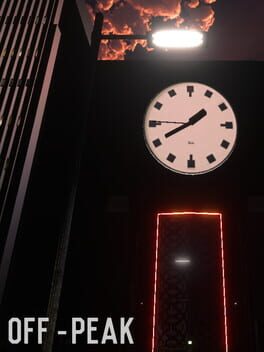
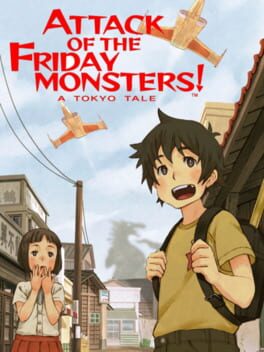
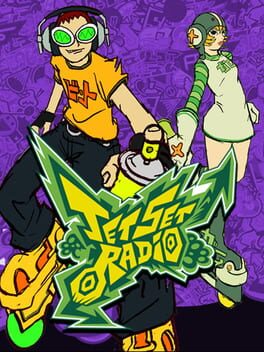


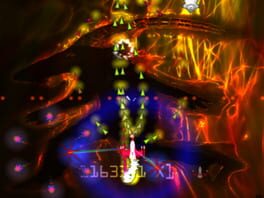
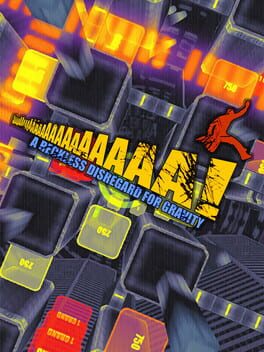



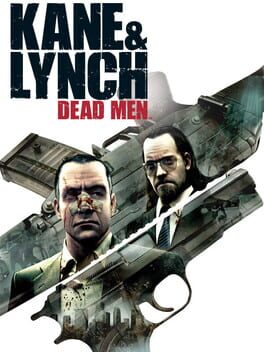
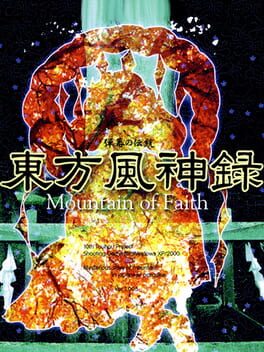
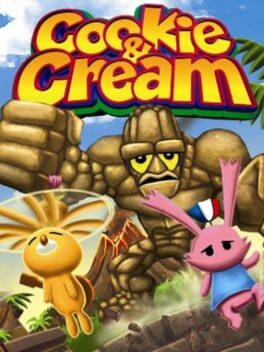

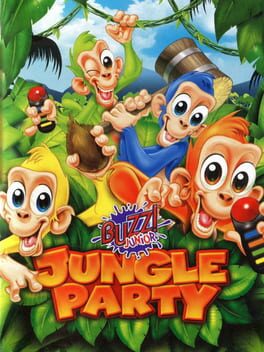
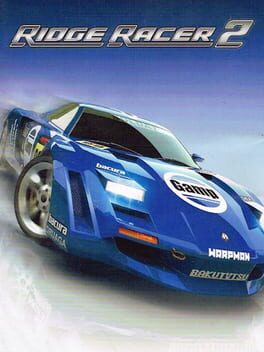

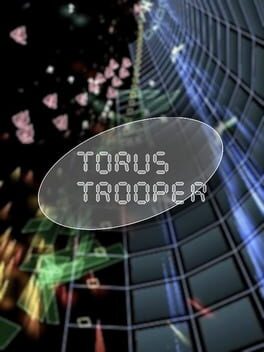
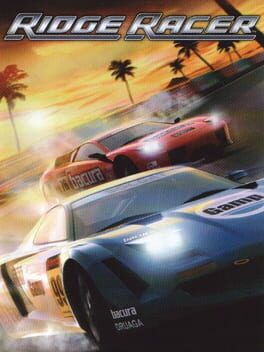
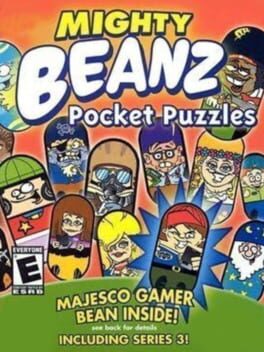
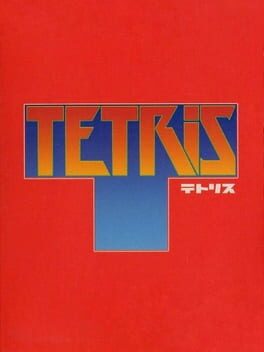
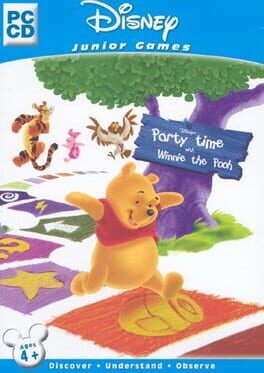

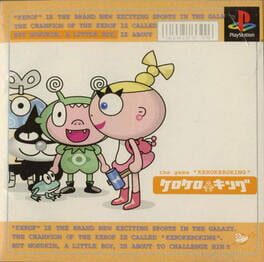


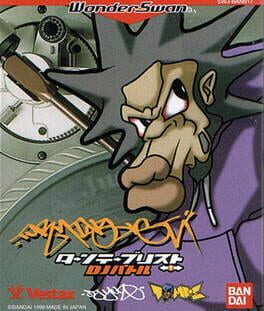

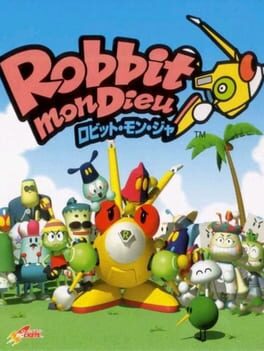
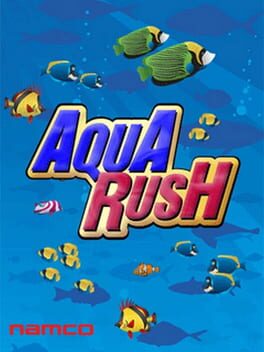
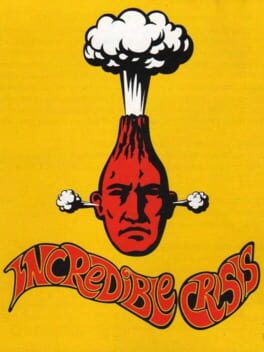
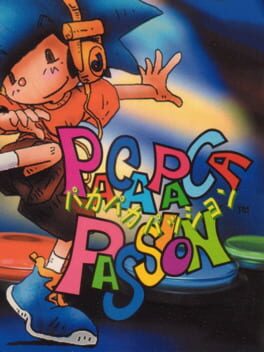
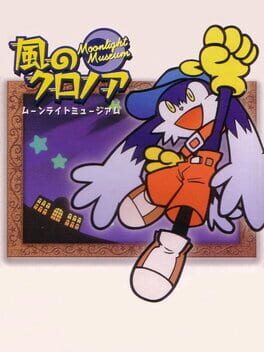
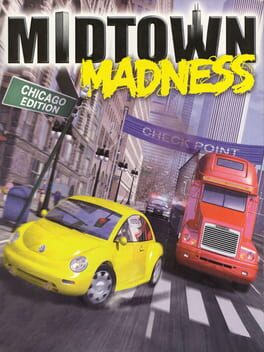
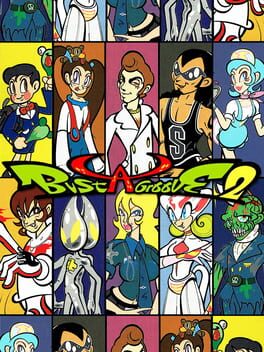
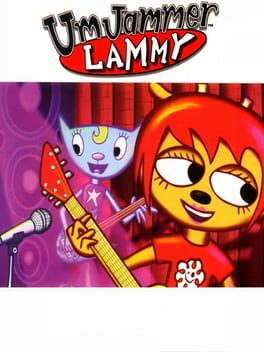
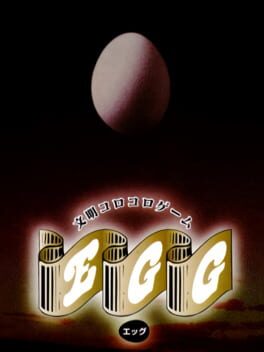
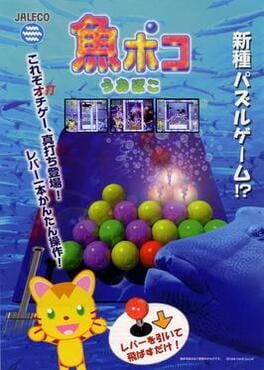
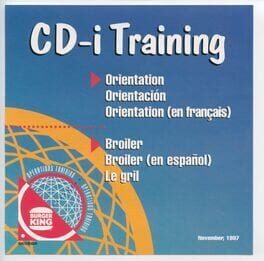
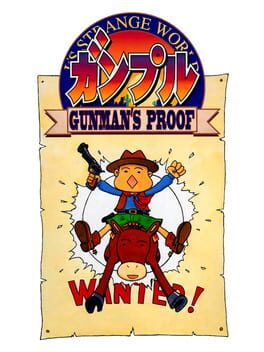
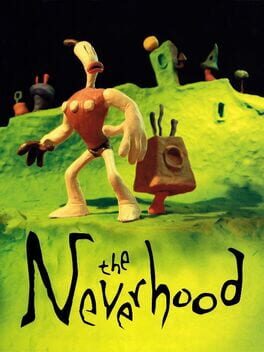
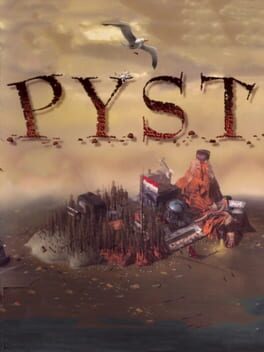

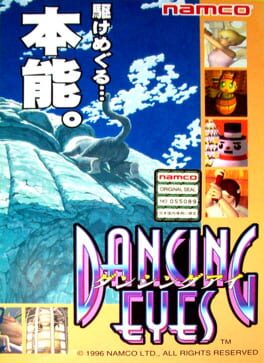

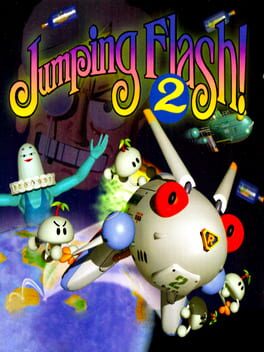


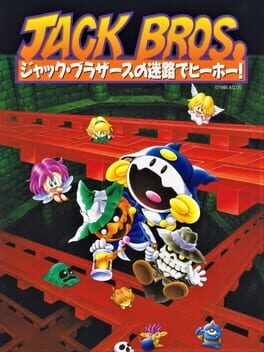

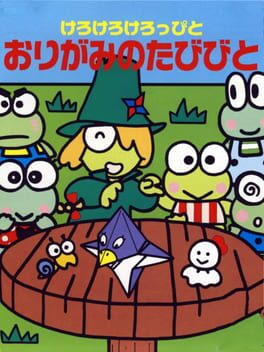

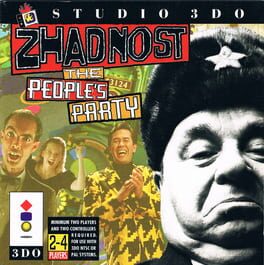



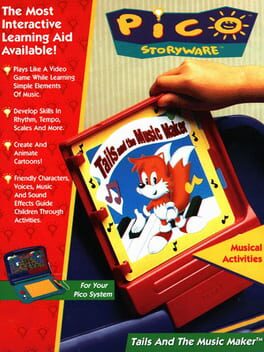


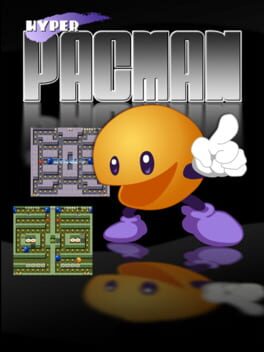
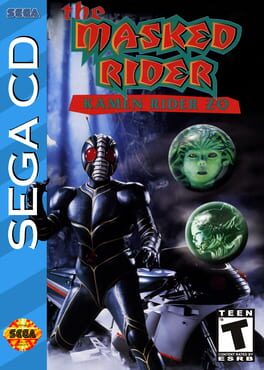

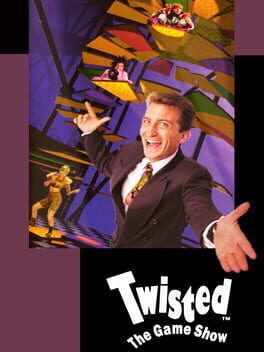
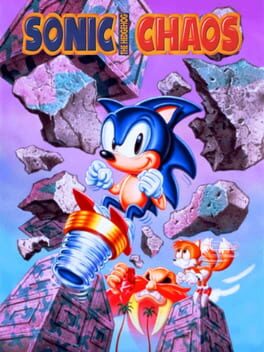

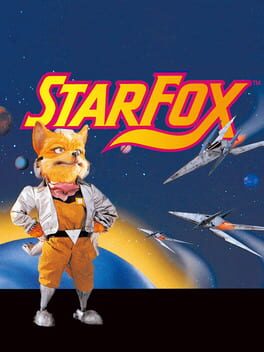
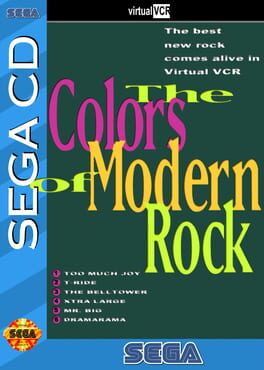
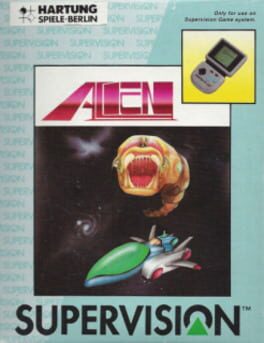
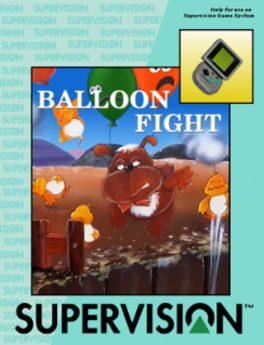
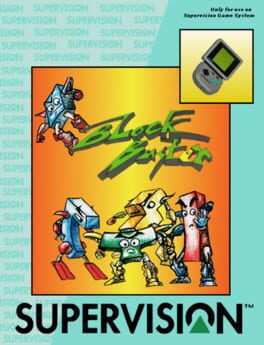
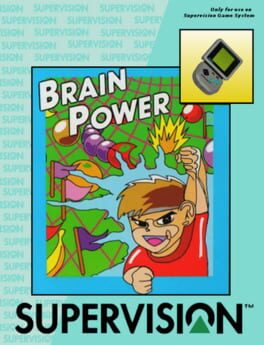
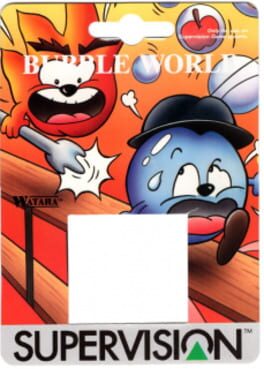
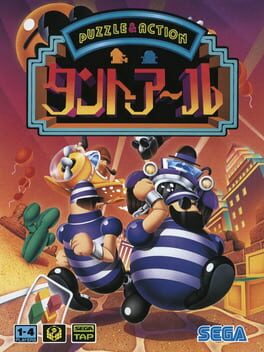
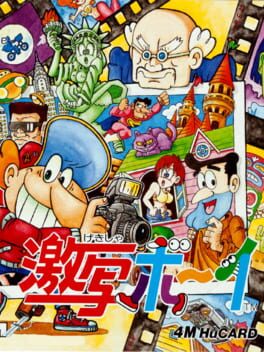
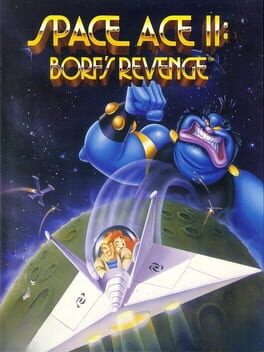
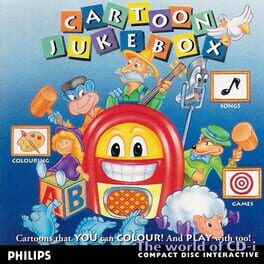
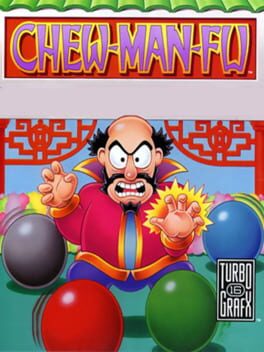
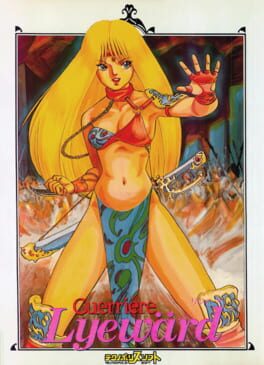

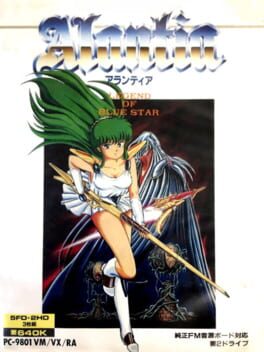

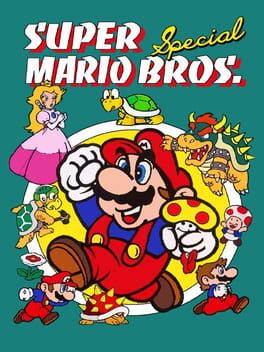

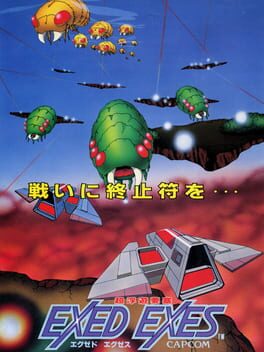
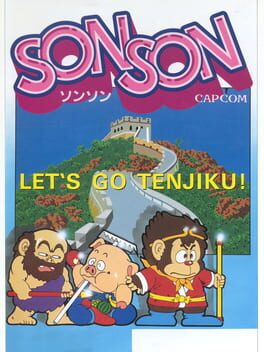
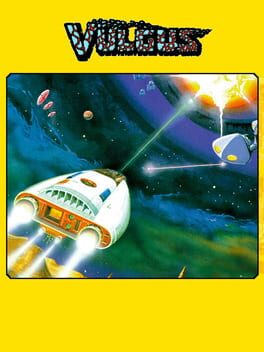

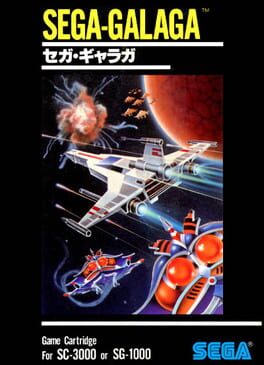

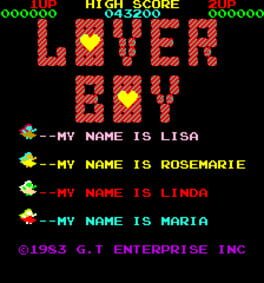
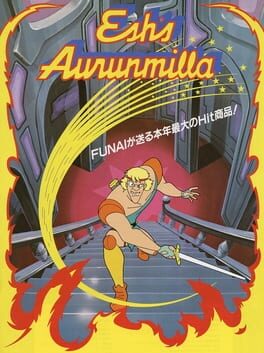
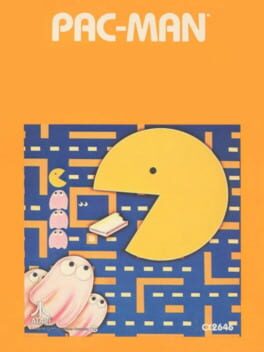
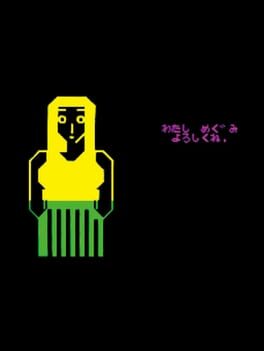
DeemonAndGames
5 months ago
For real tho I'm so glad you made this, I didn't even know you made a follow up to your 177 review so early in the year until I just saw it here, same things goes for a ton of reviews I hadn't checked out till now. Amazing year full of amazing reviews, that's something that I could say about a ton of the talented people on here (which is a lot) but your works are always a fantastic read and an inspiration for me and I'm sure also for many others. Excellent work!